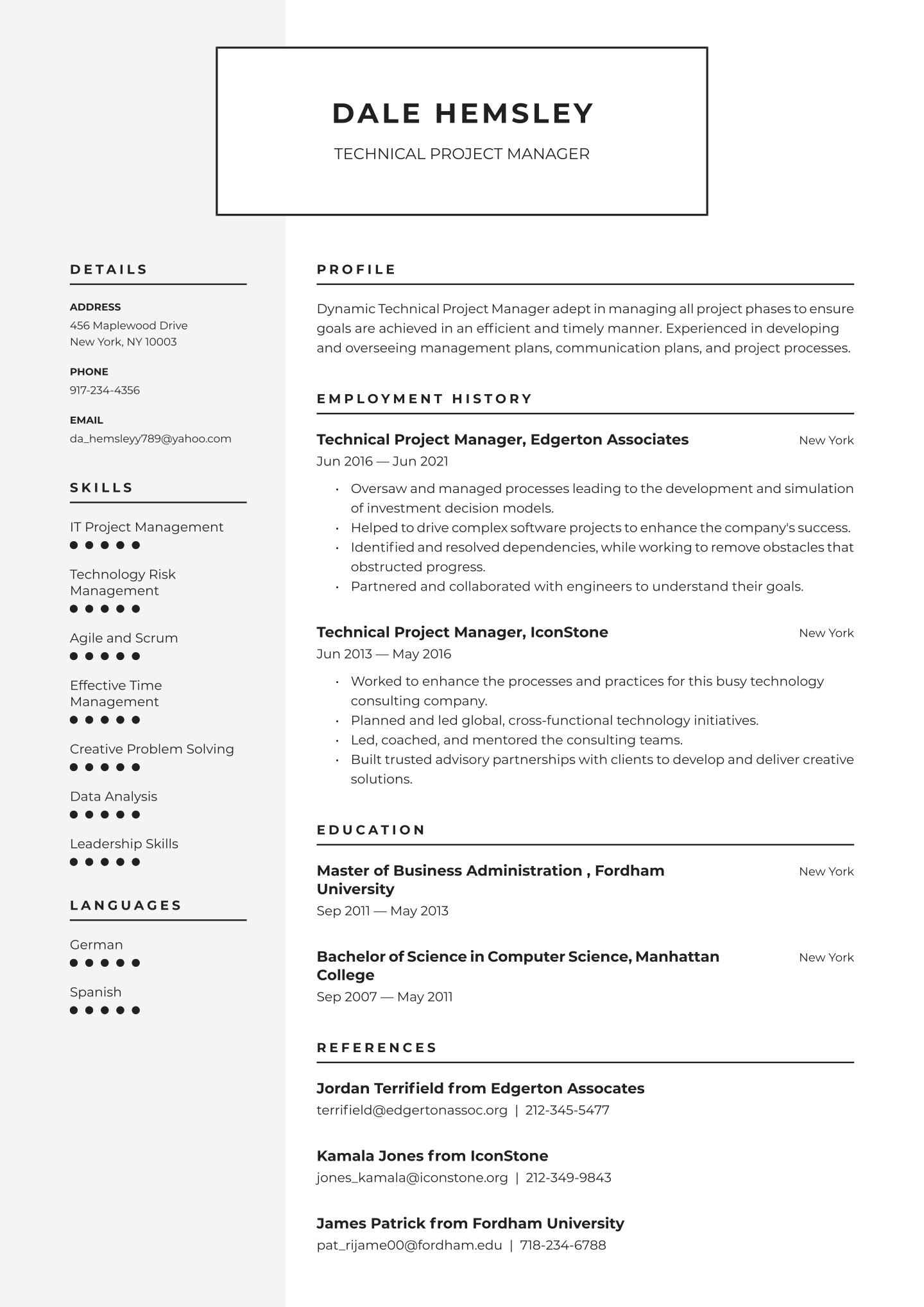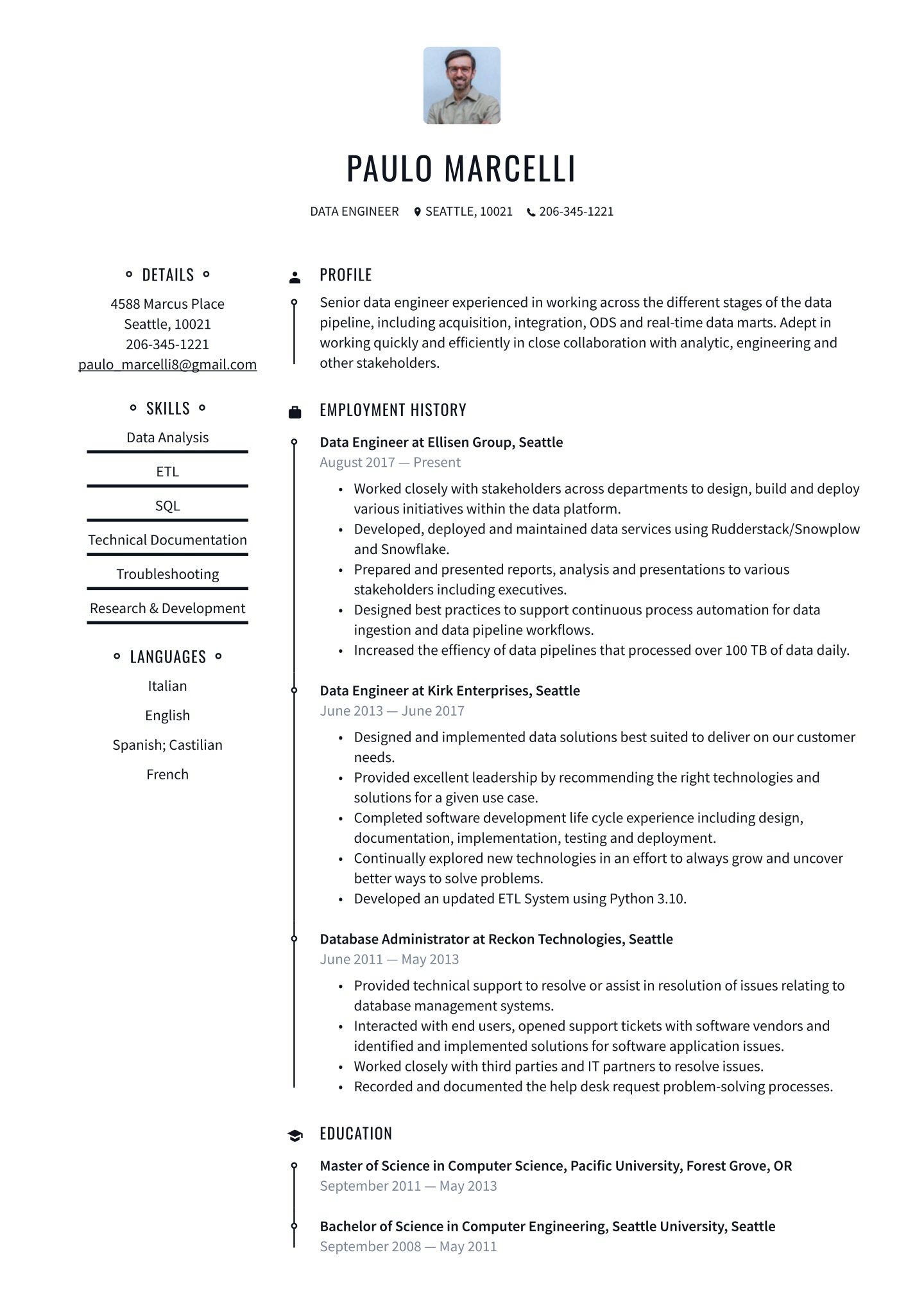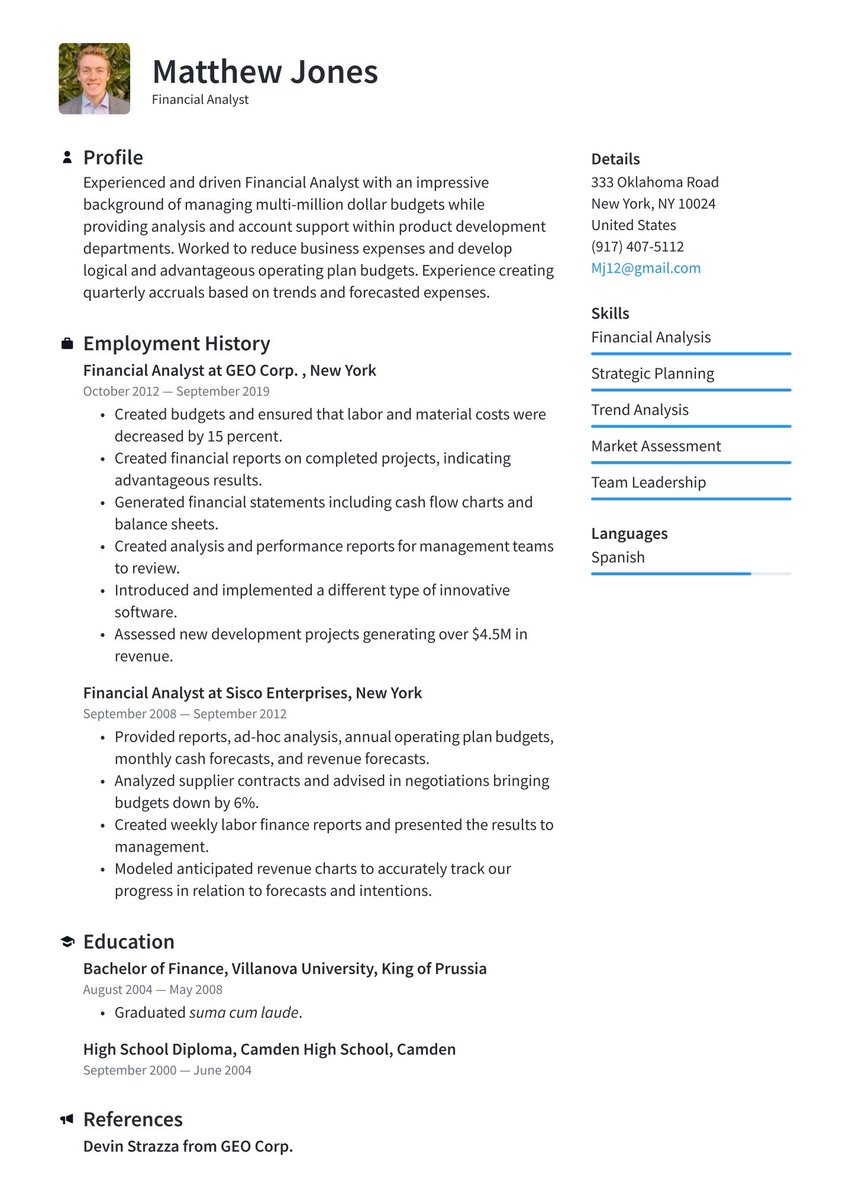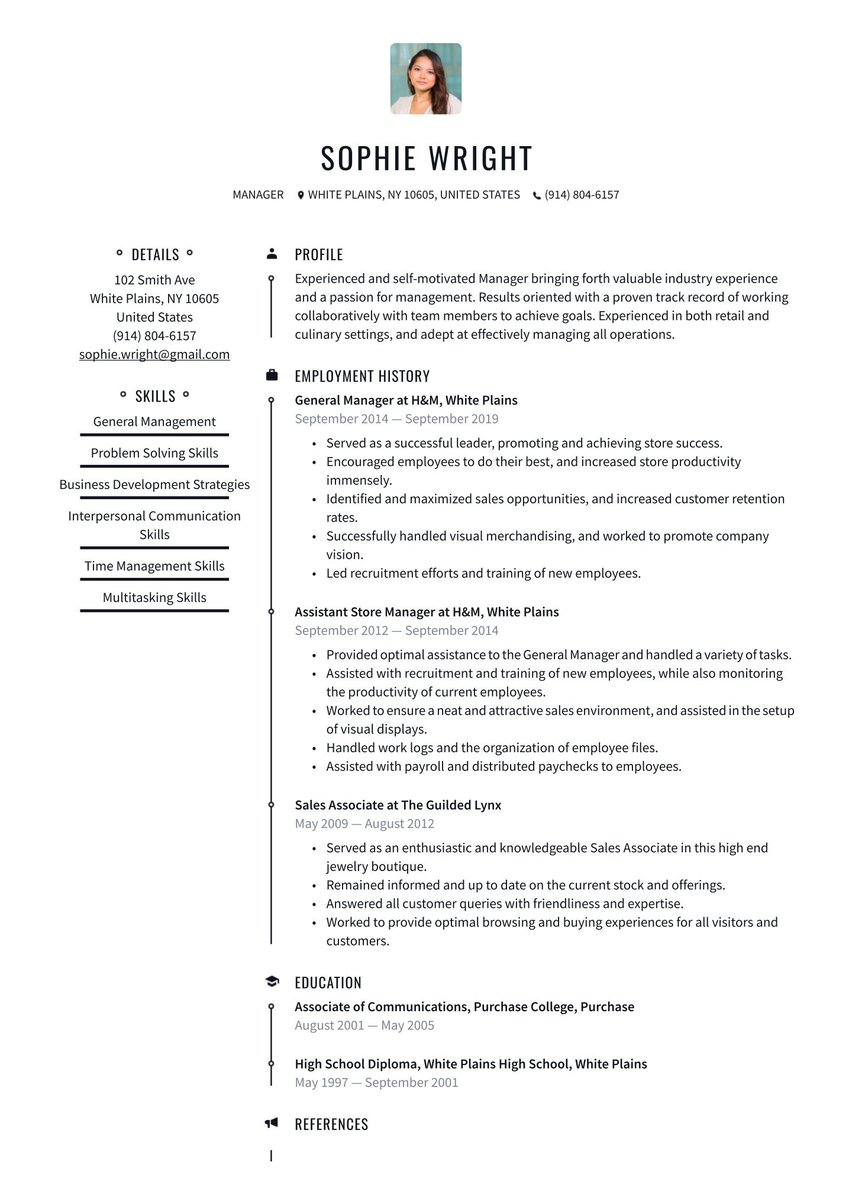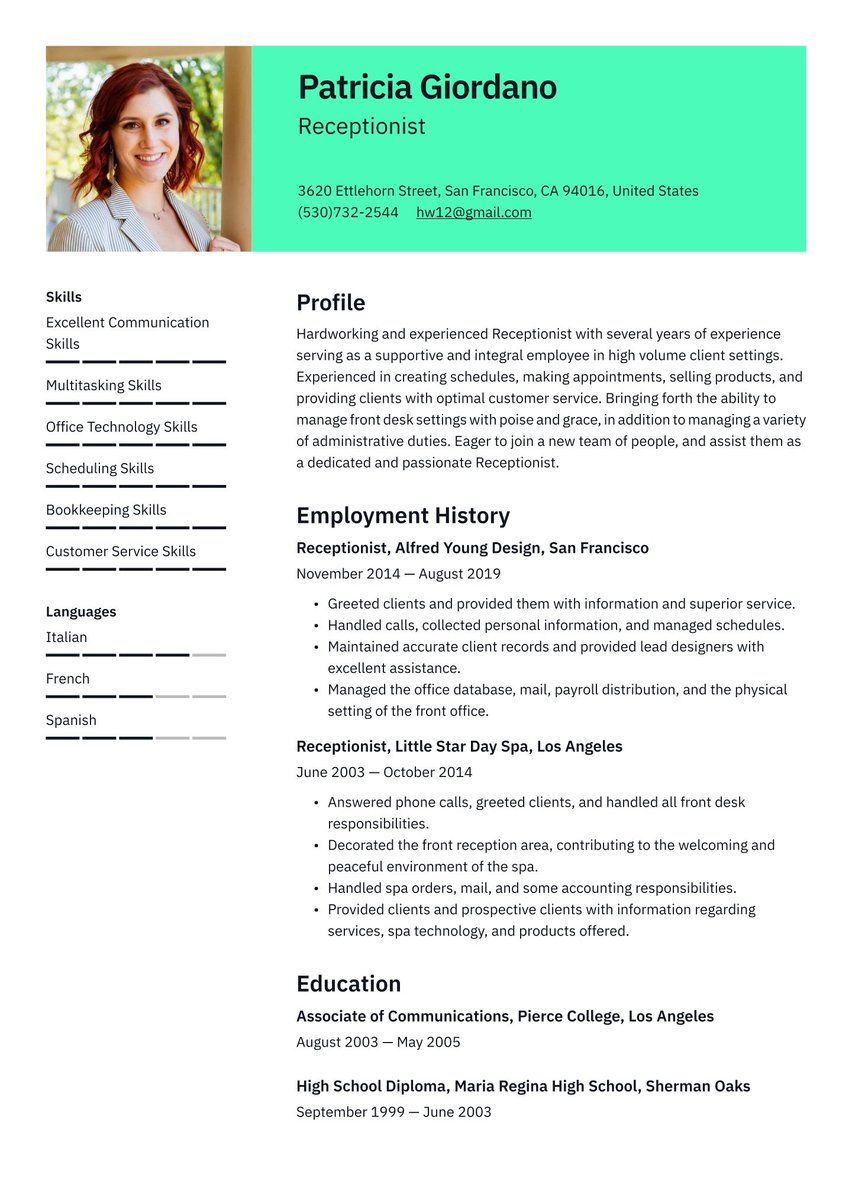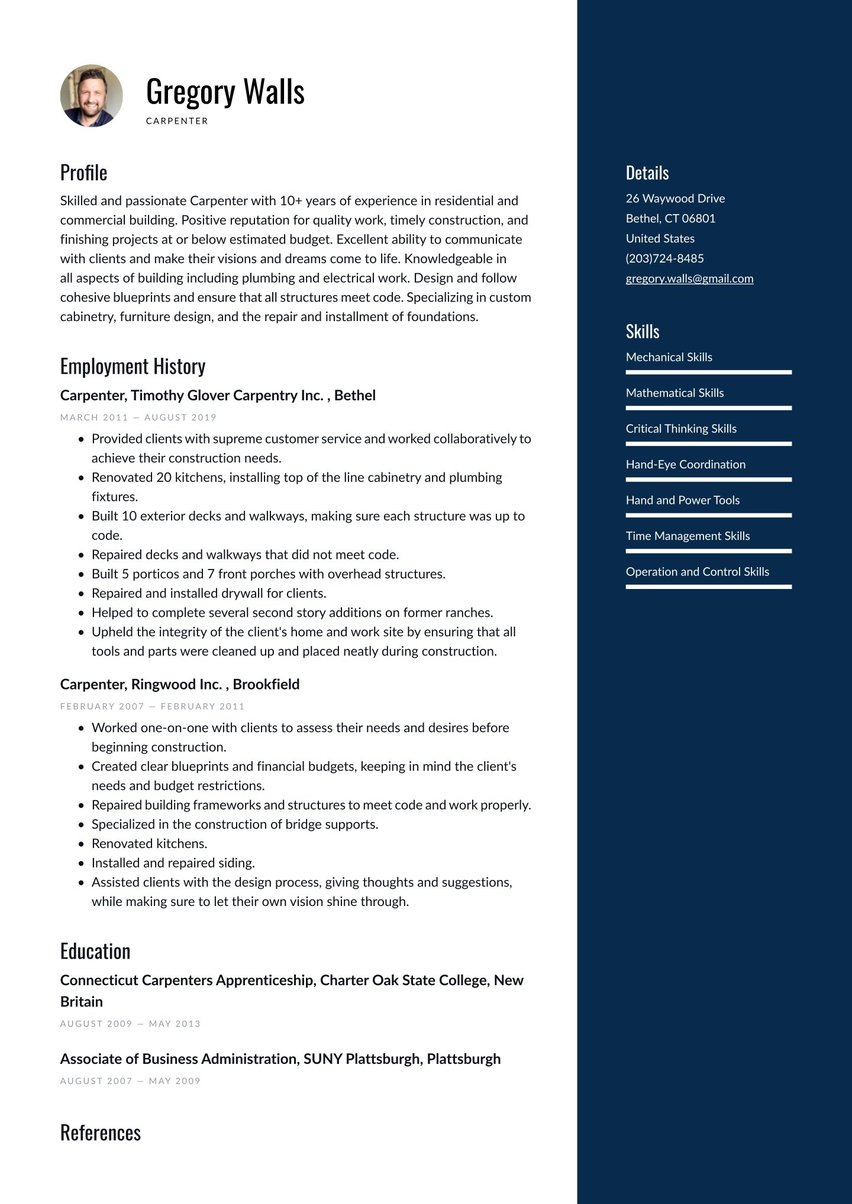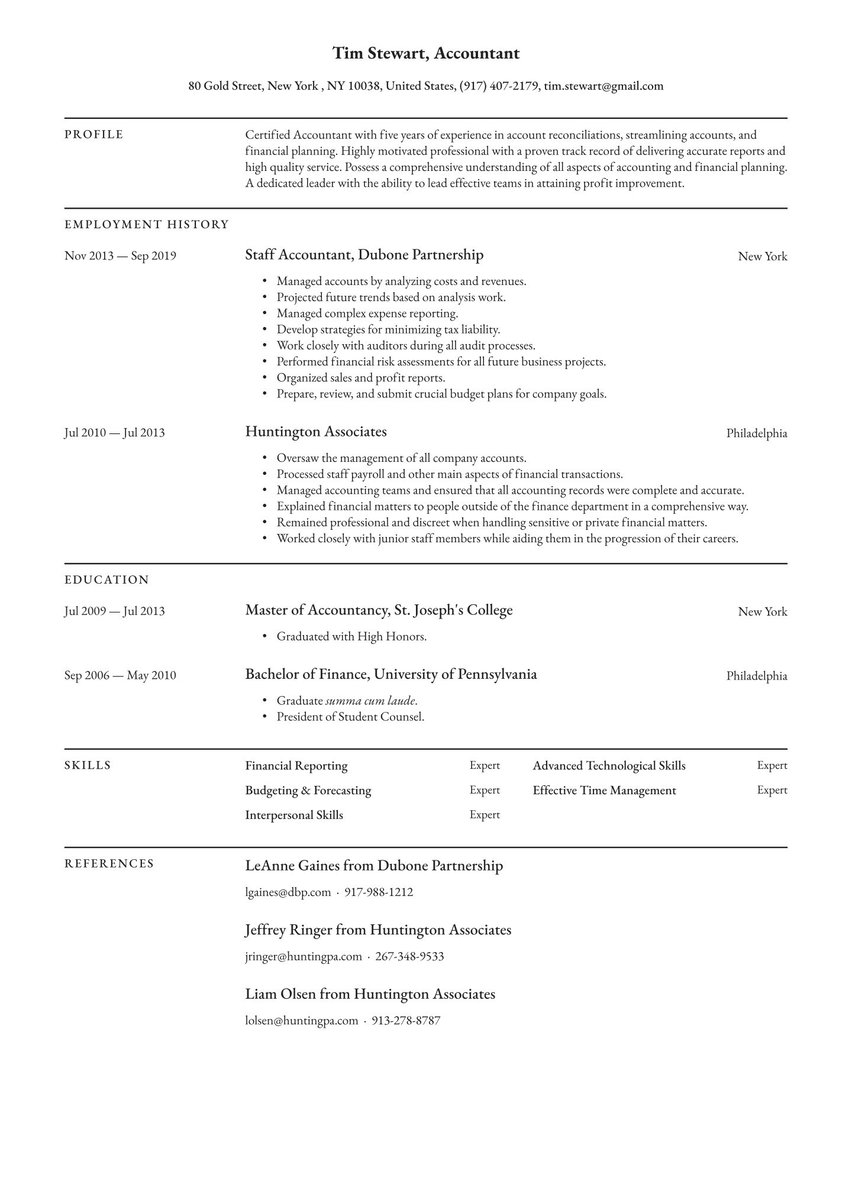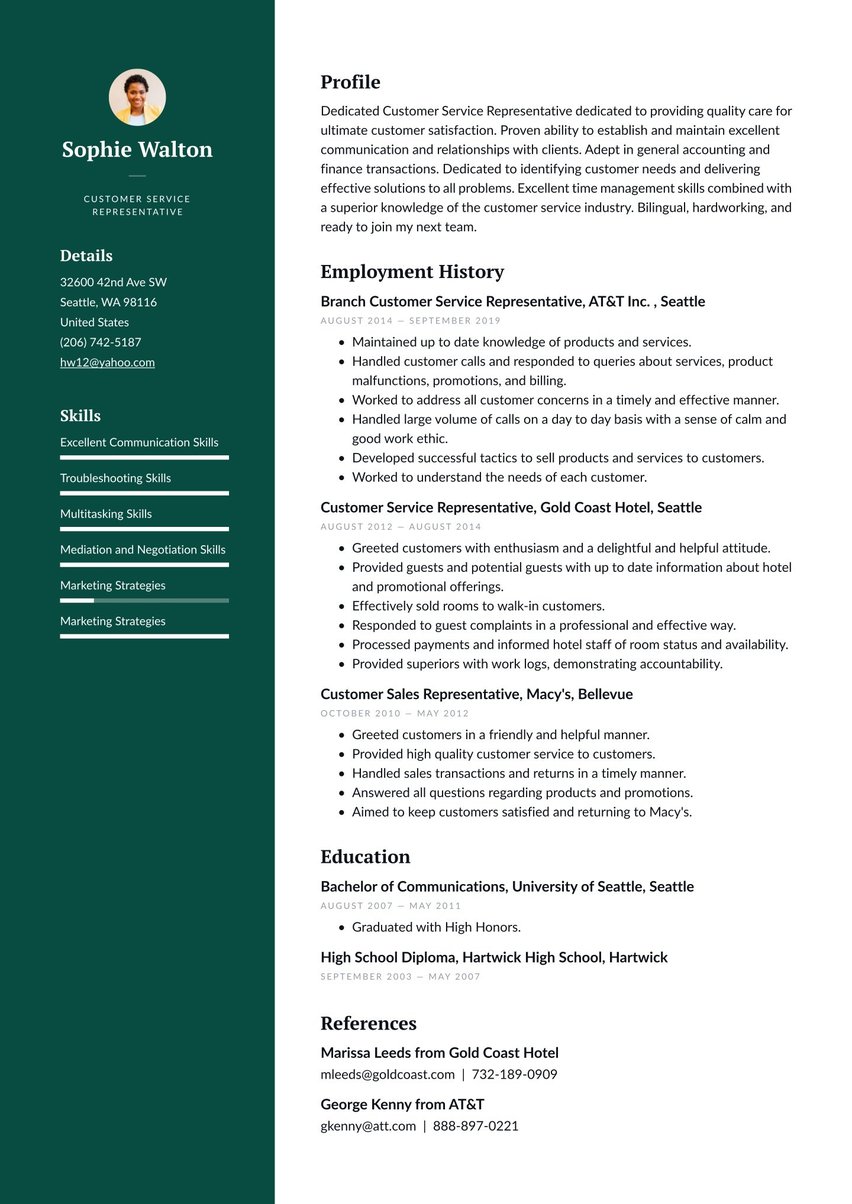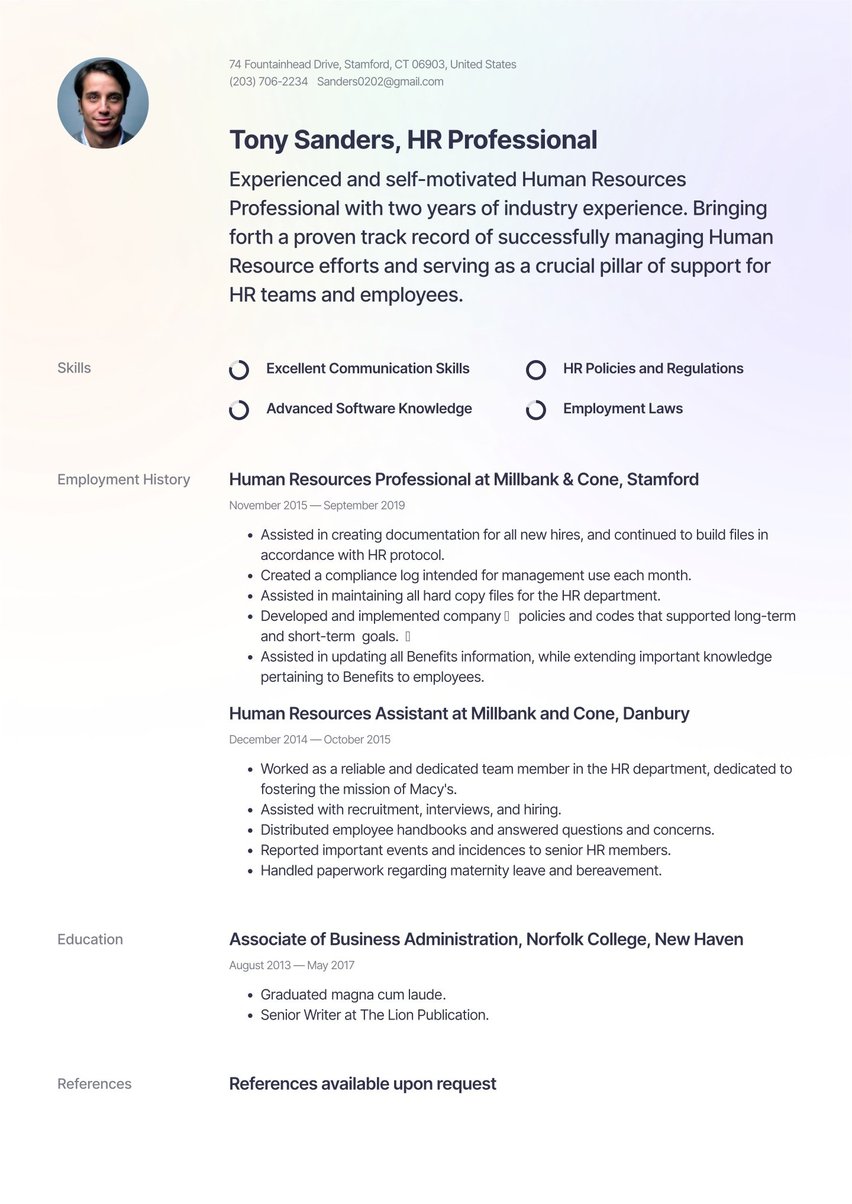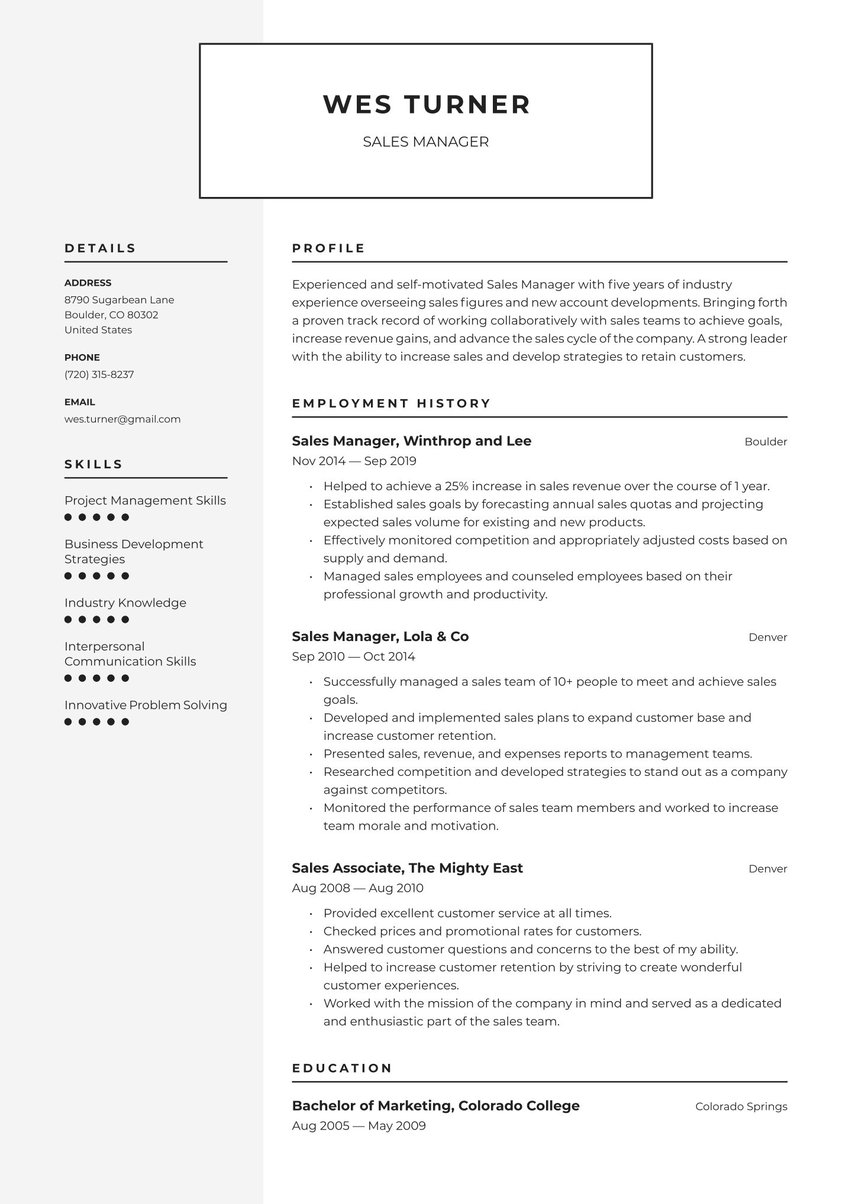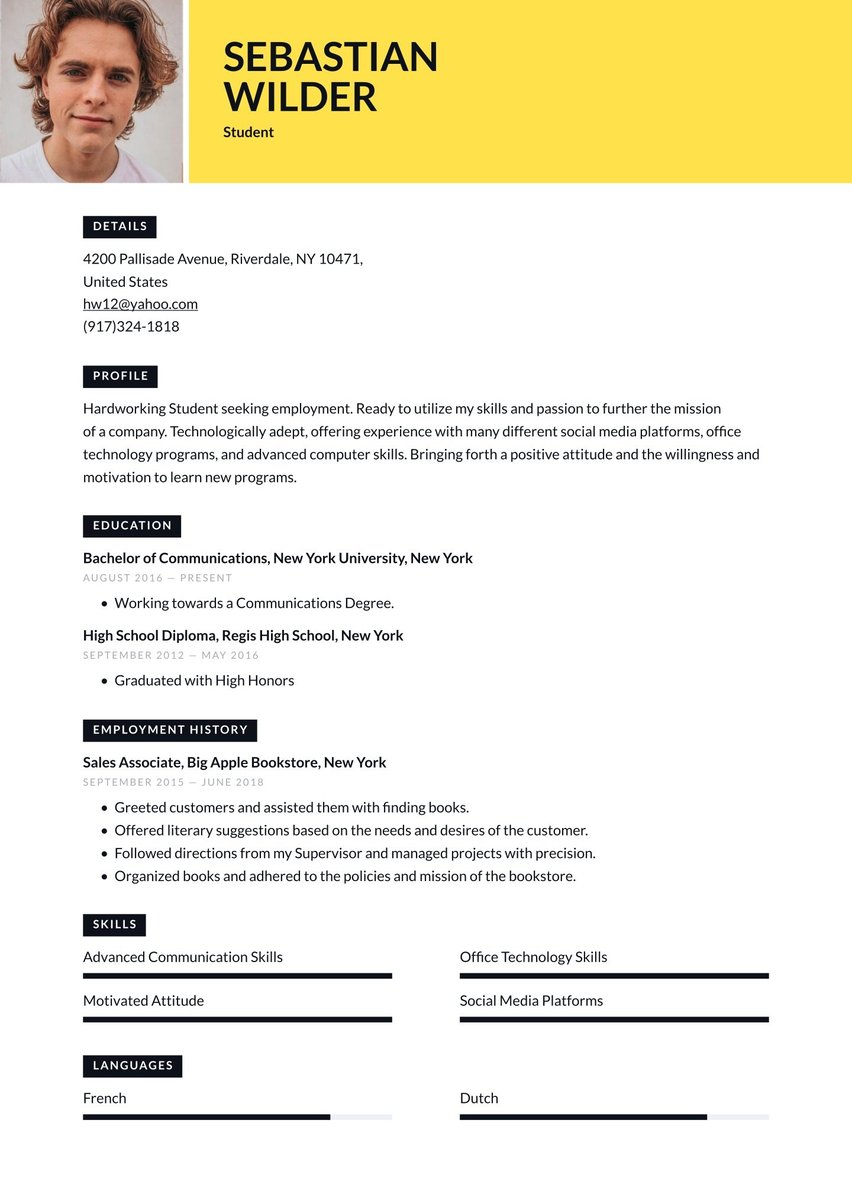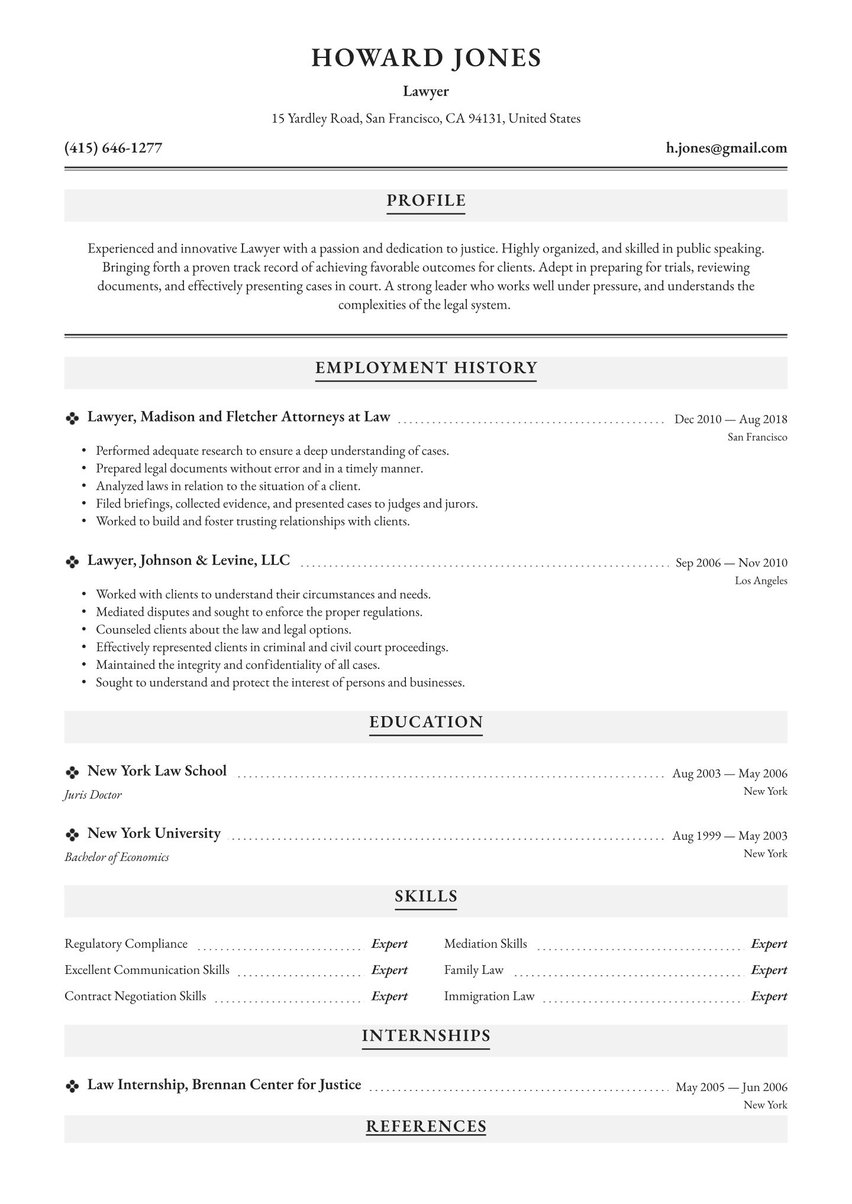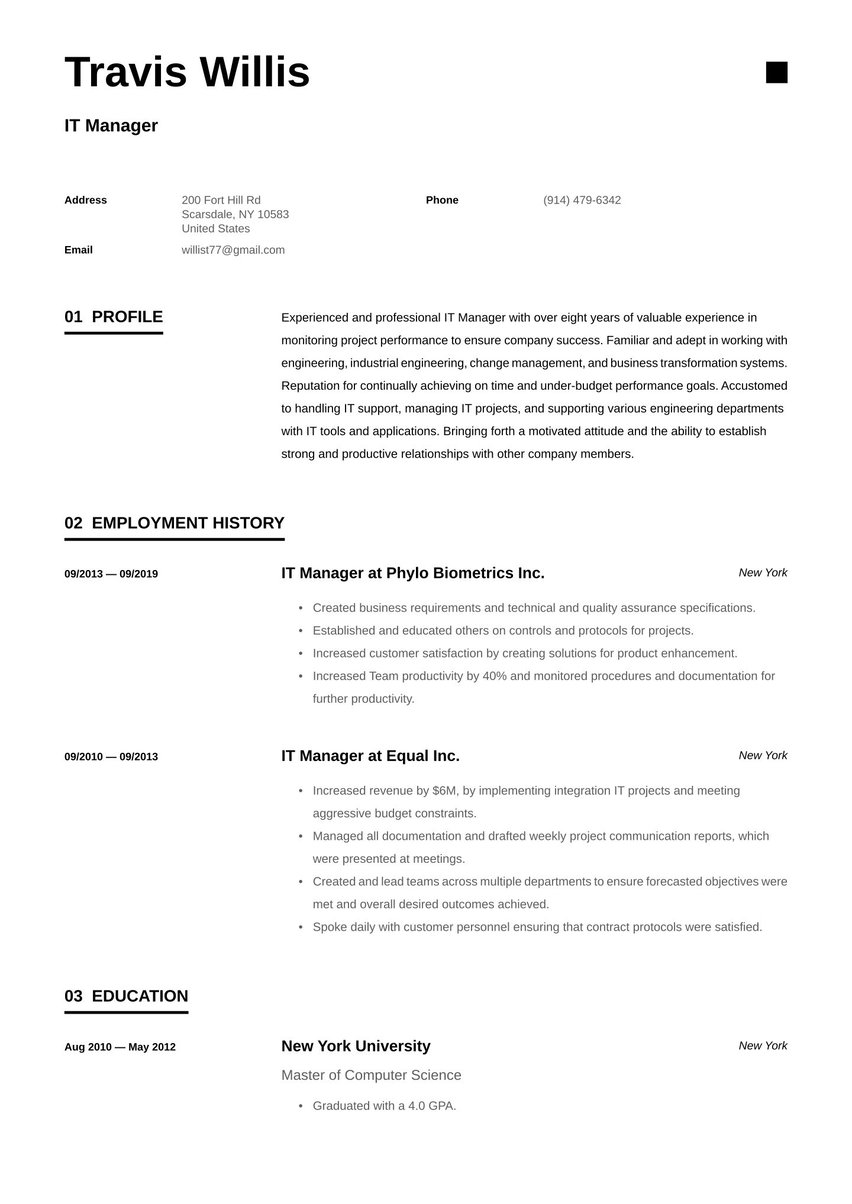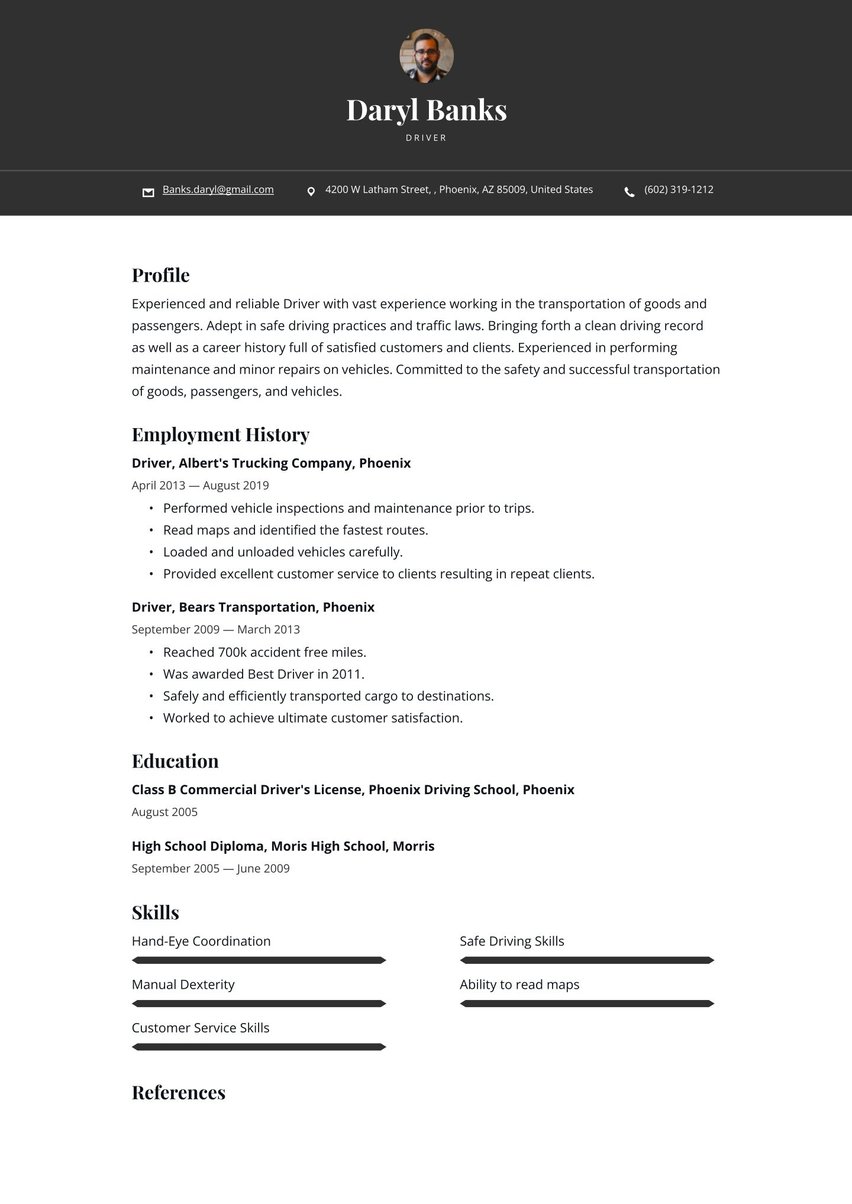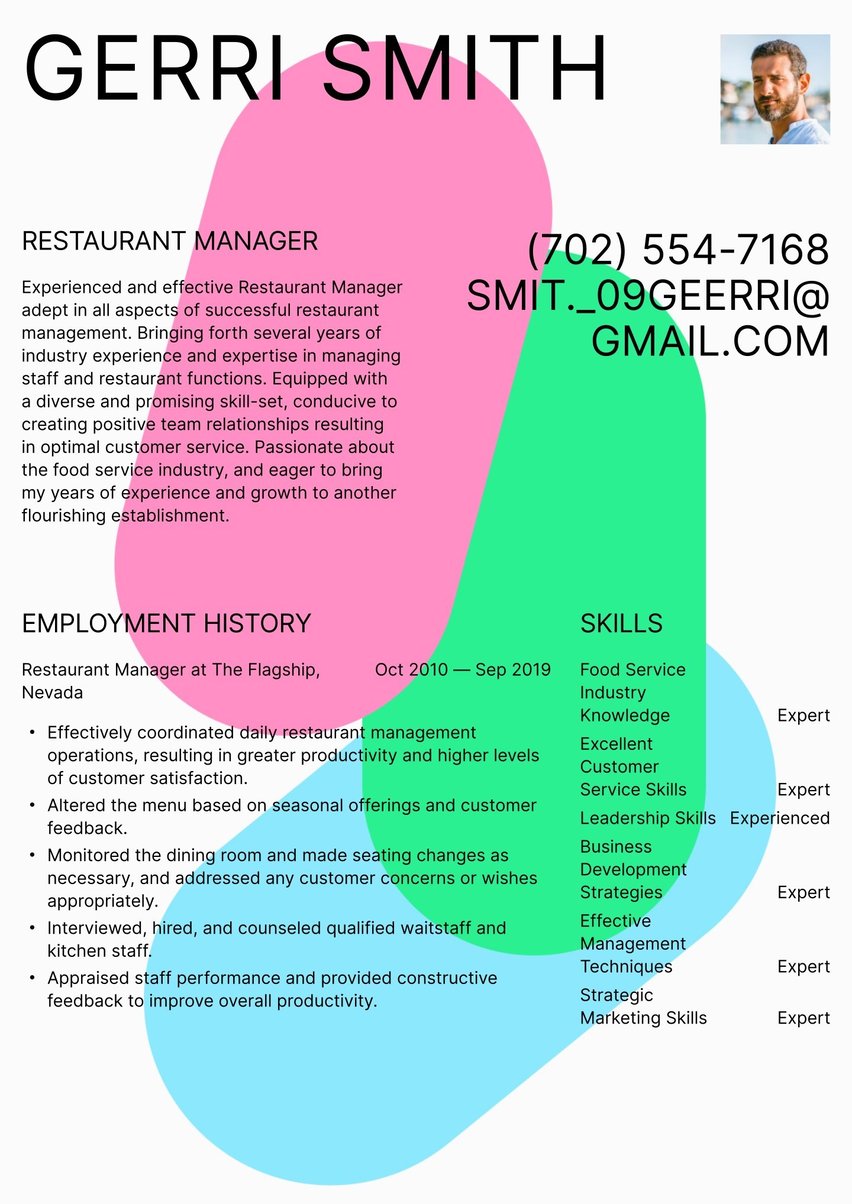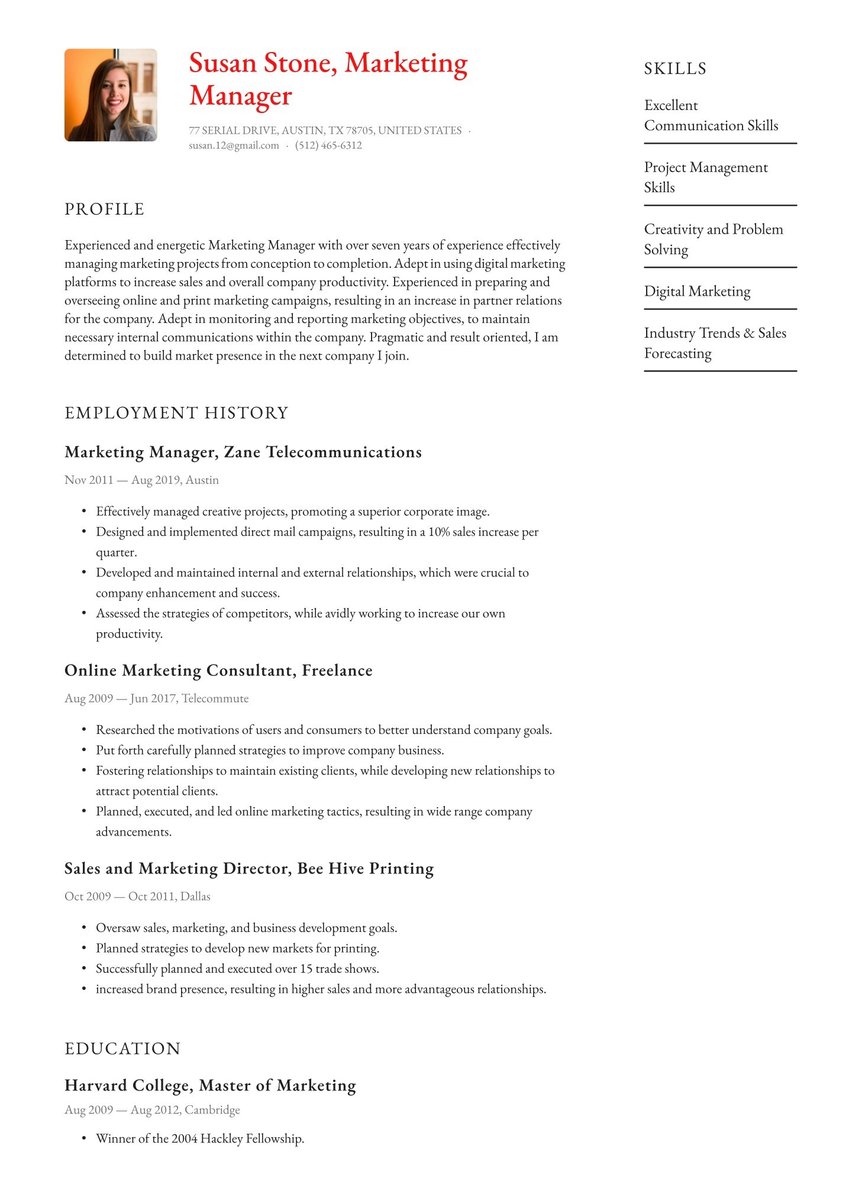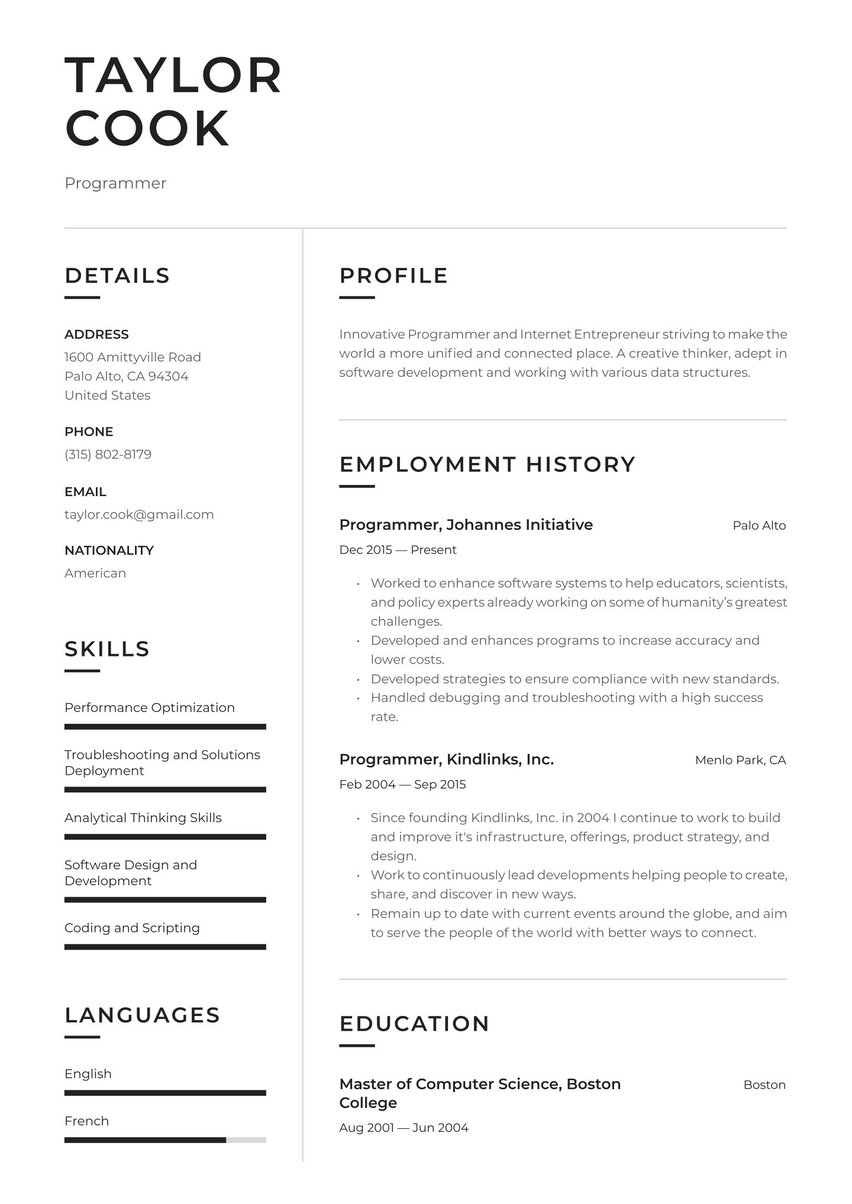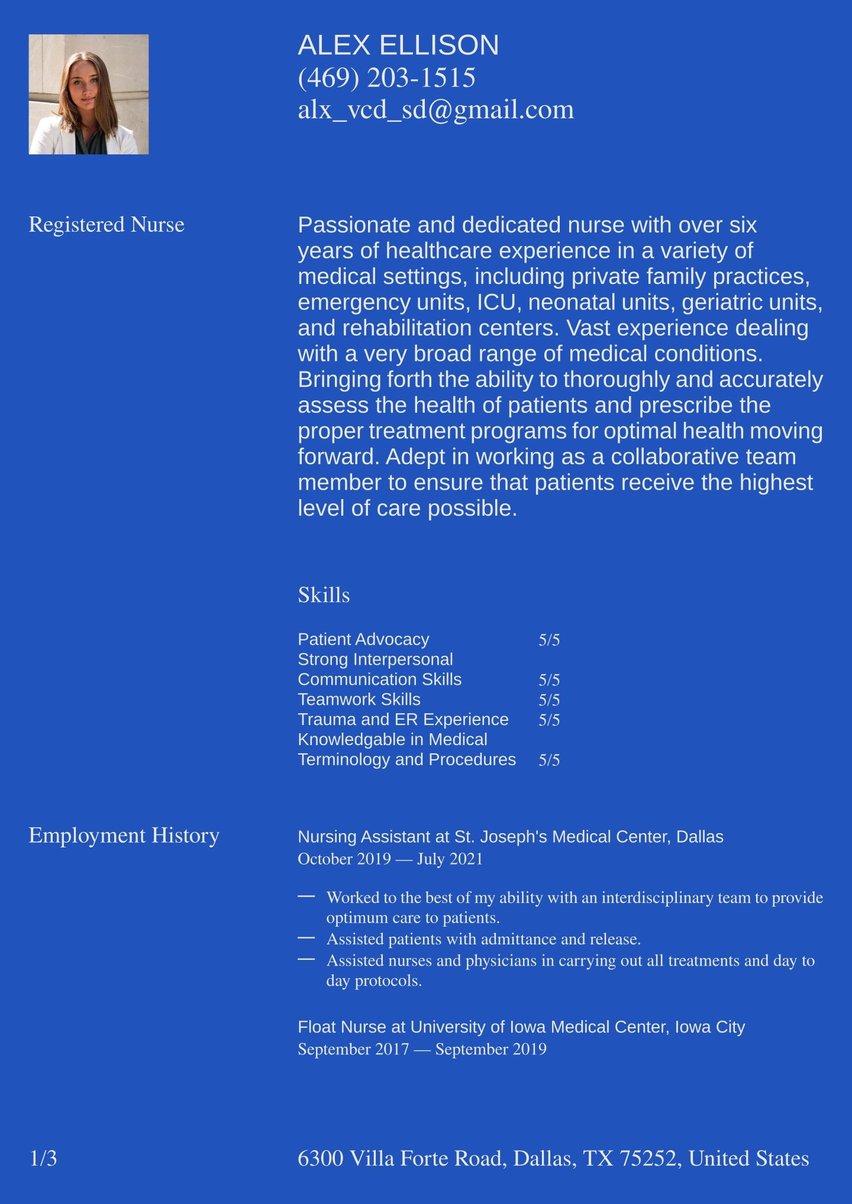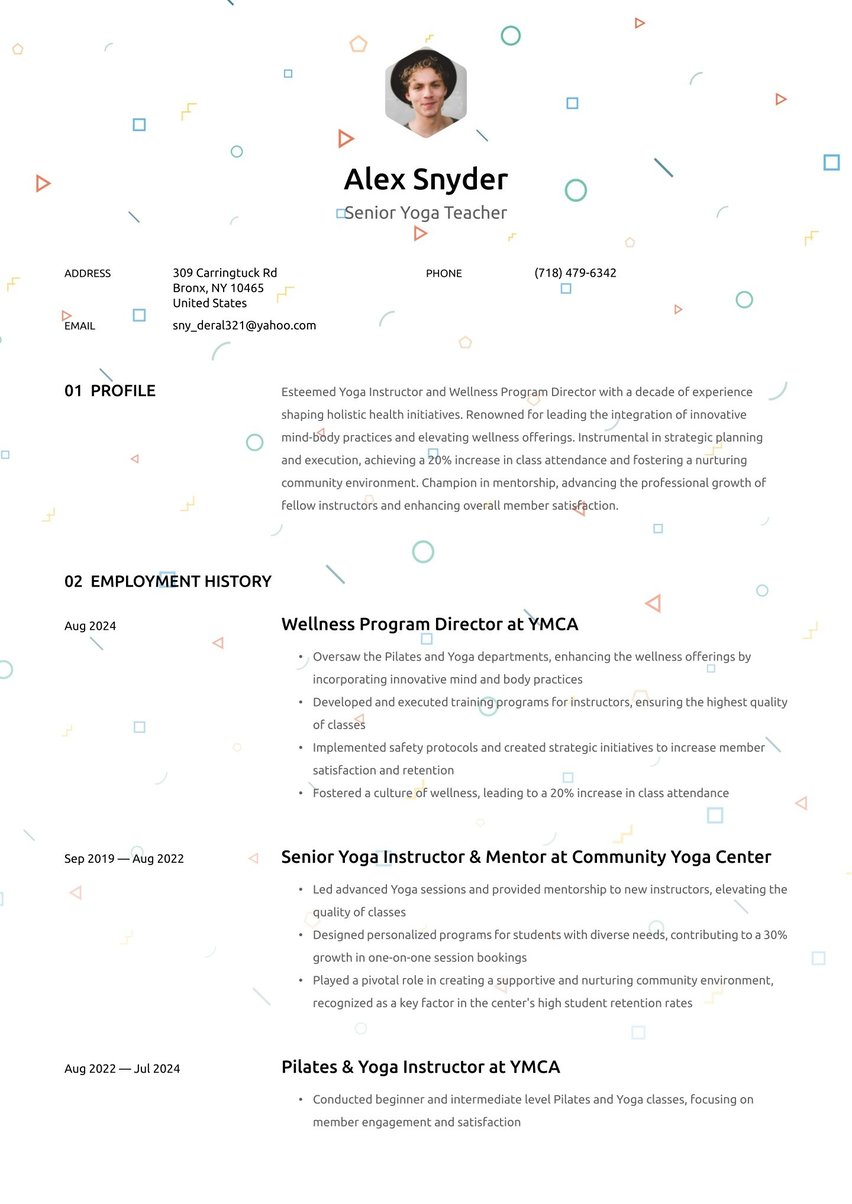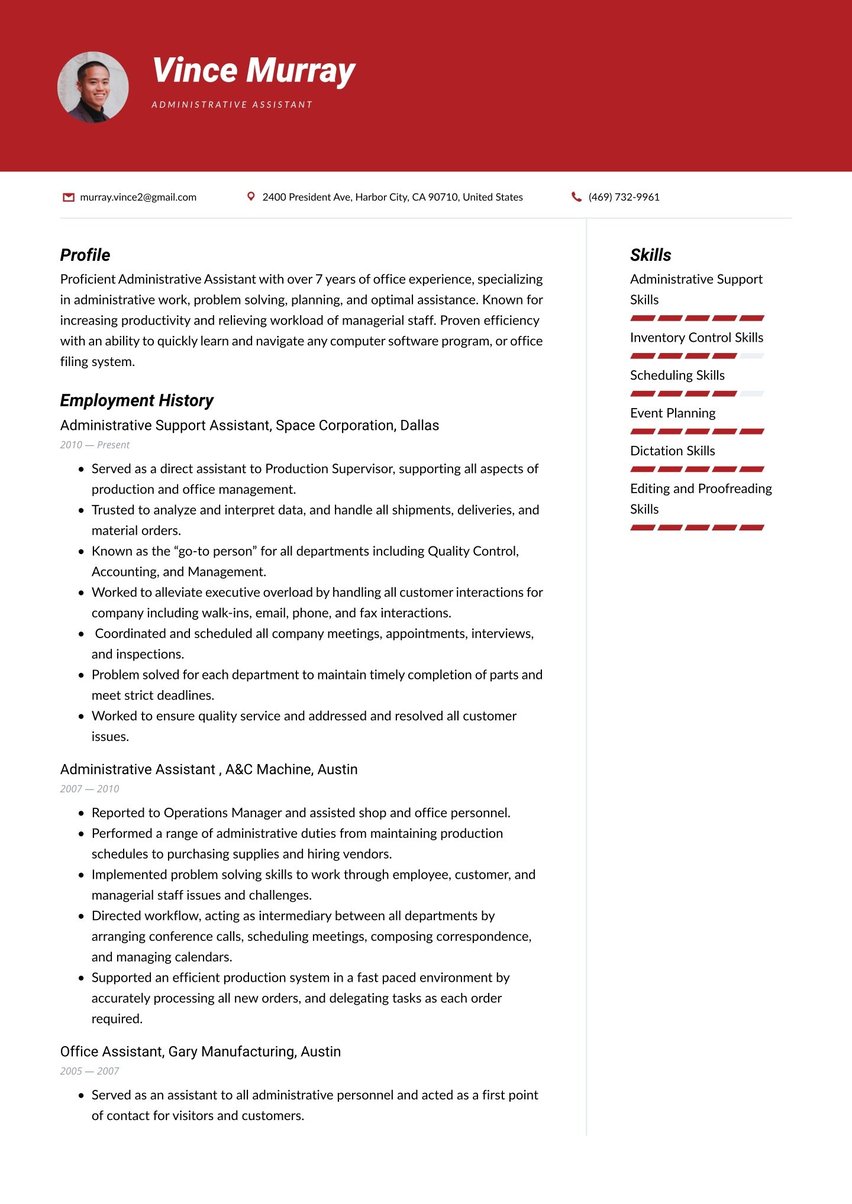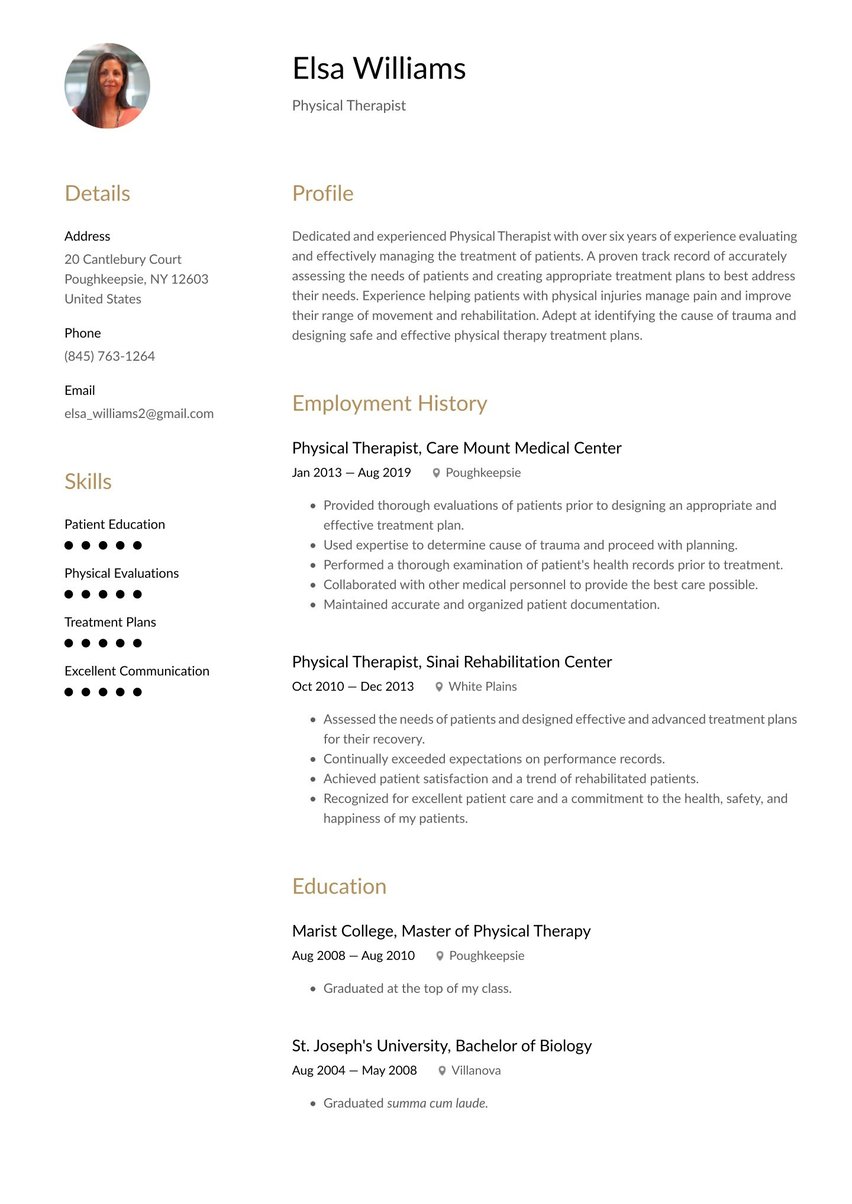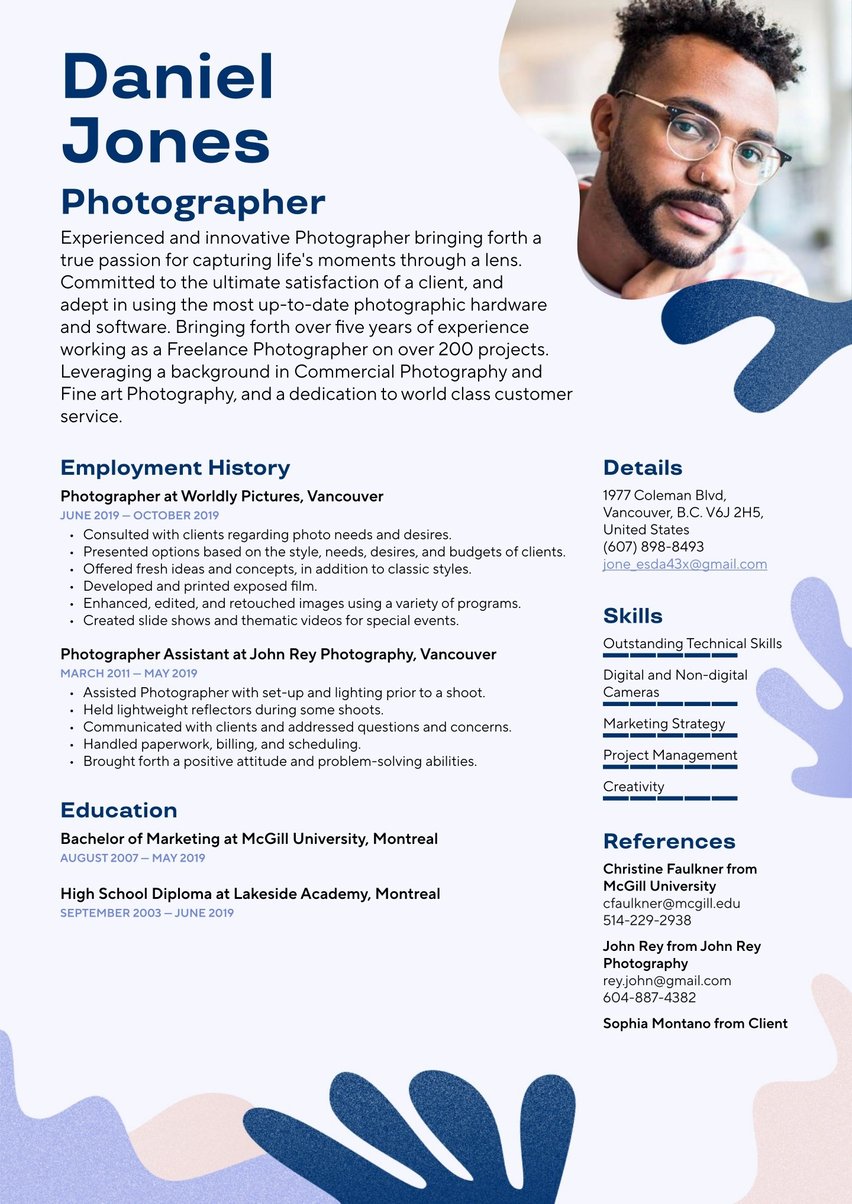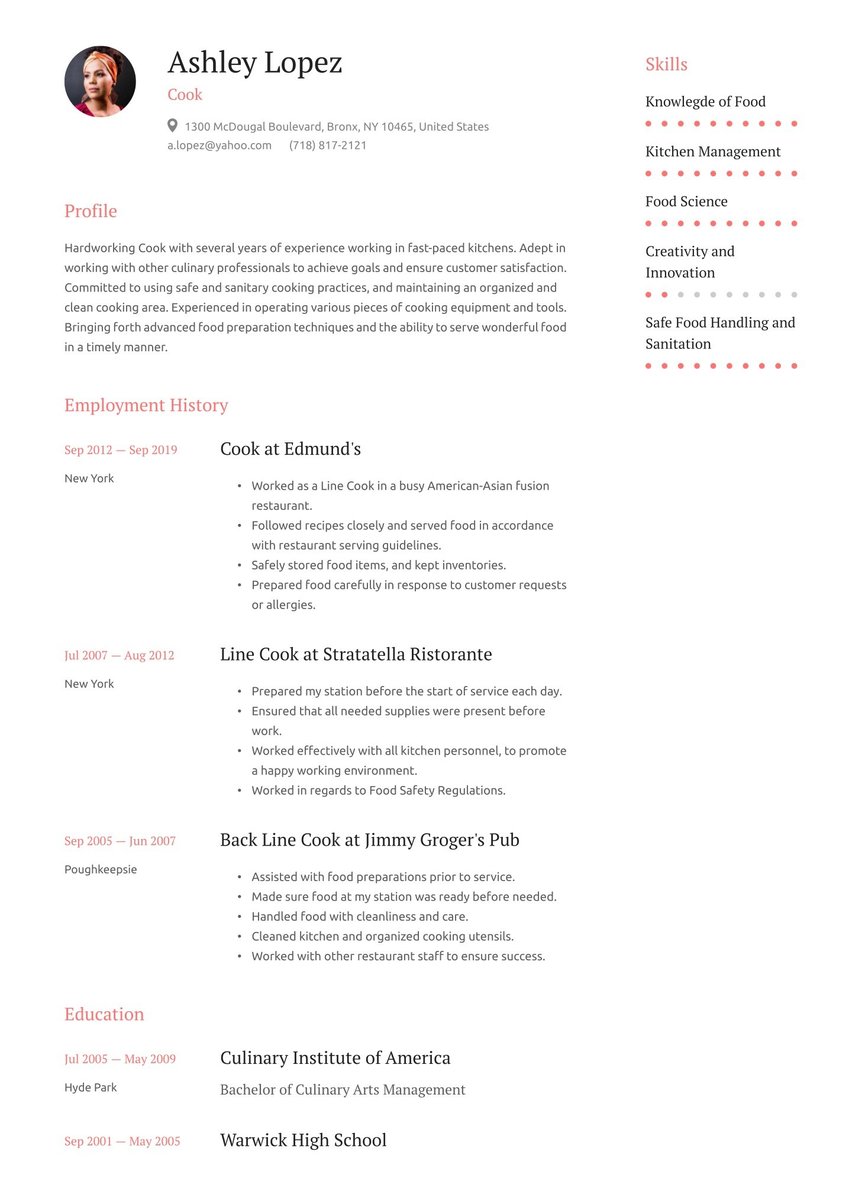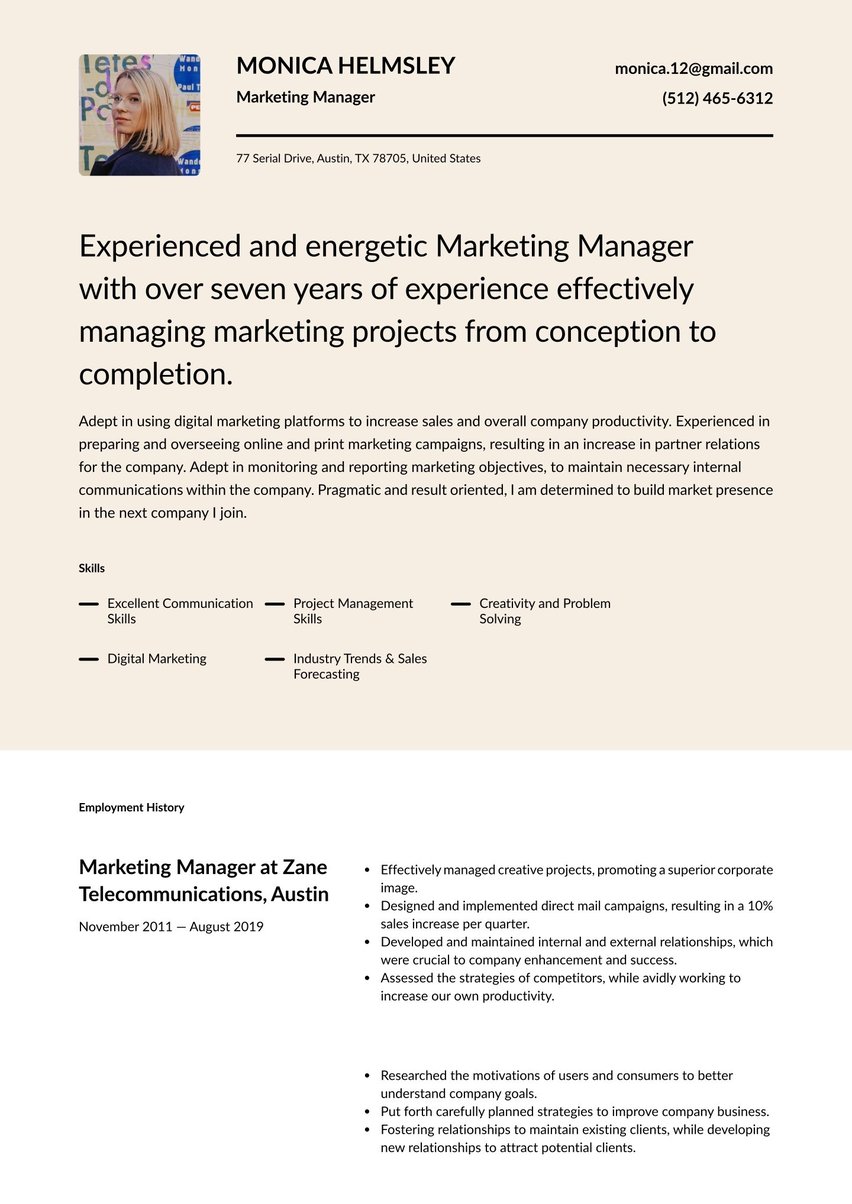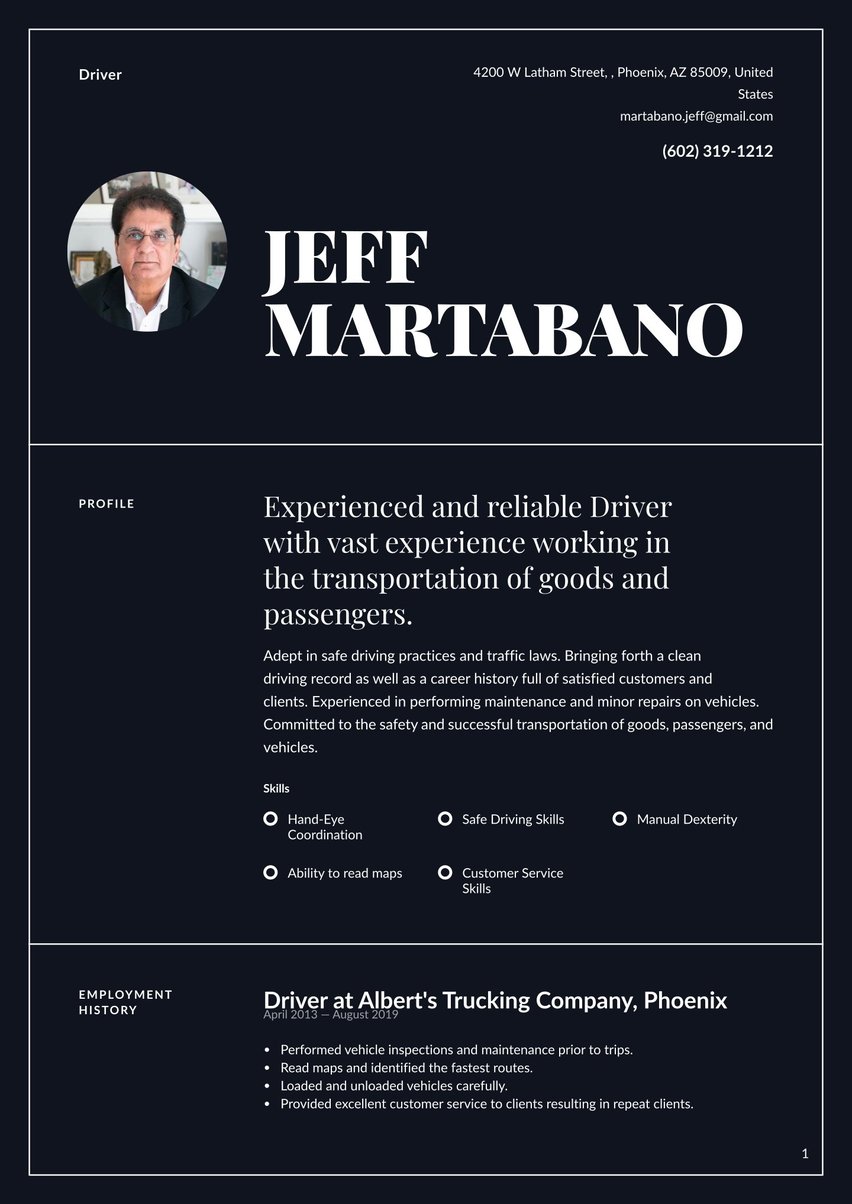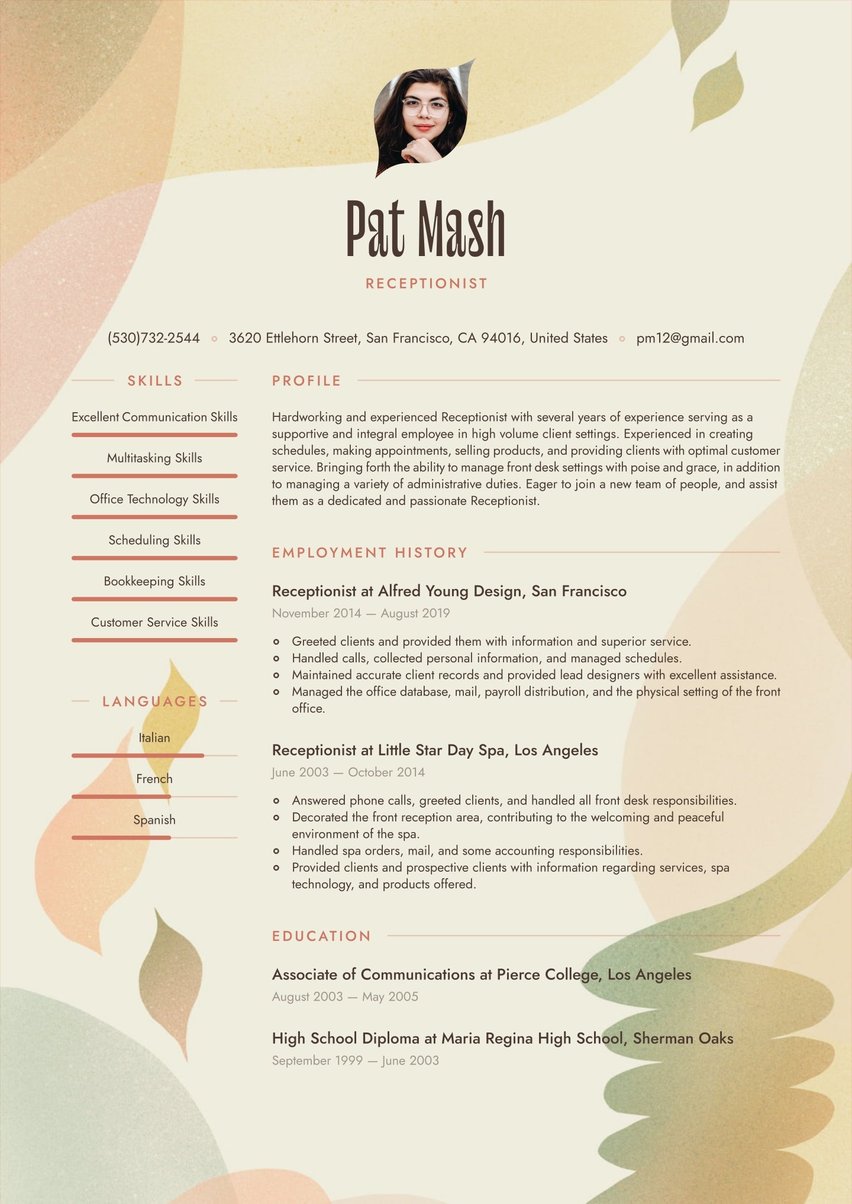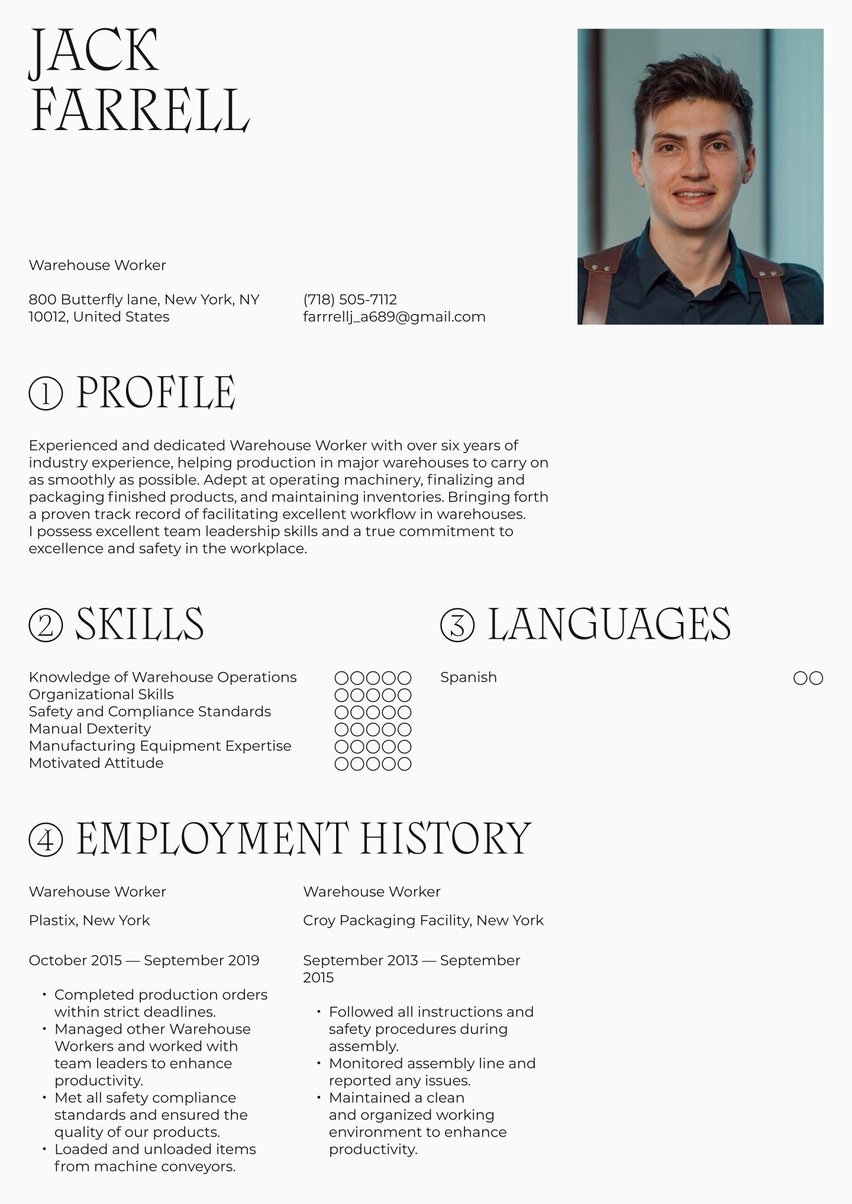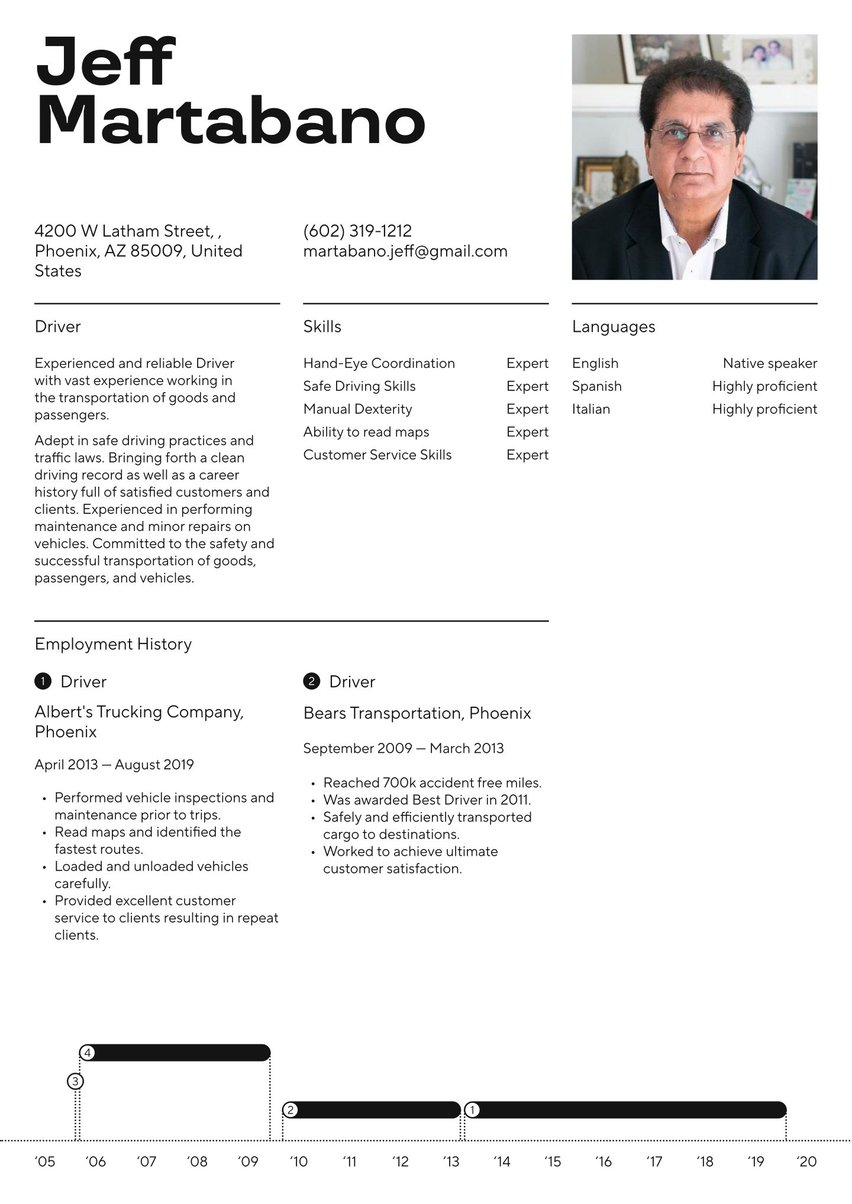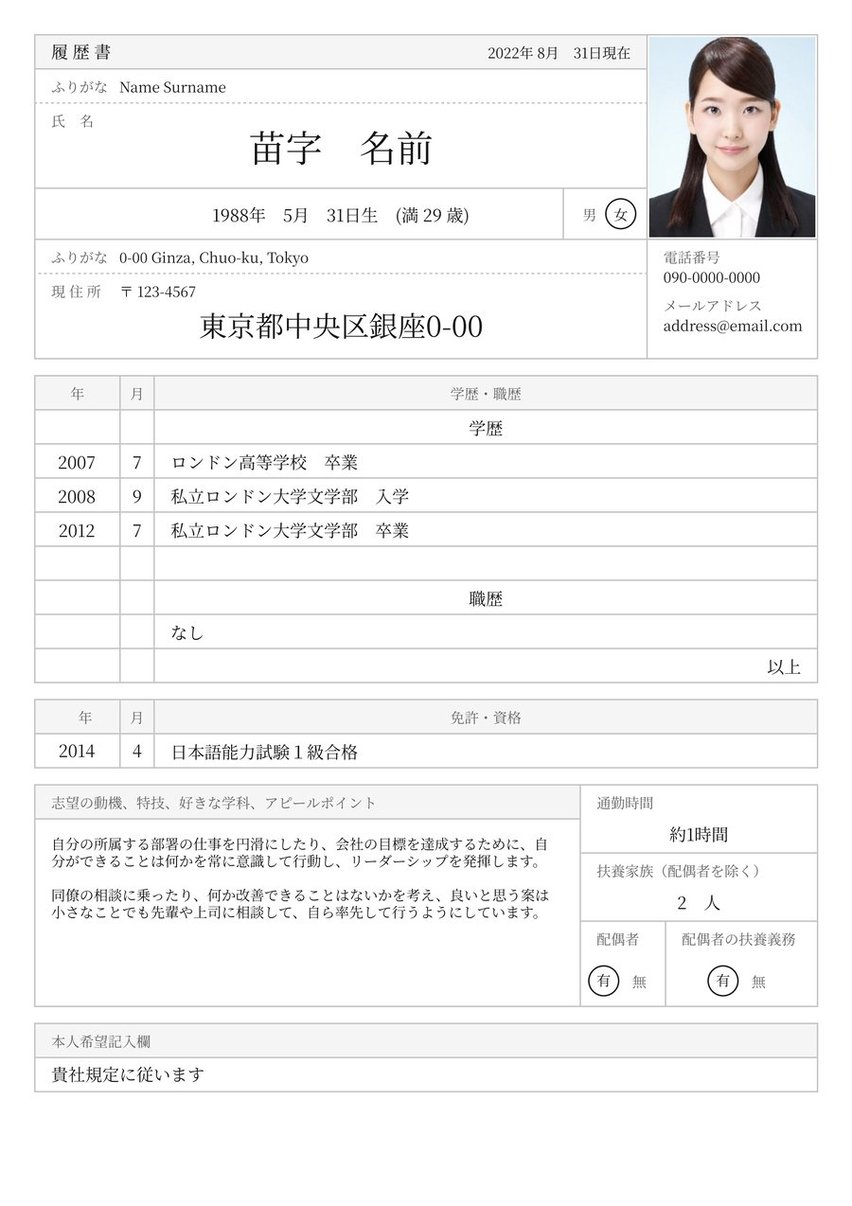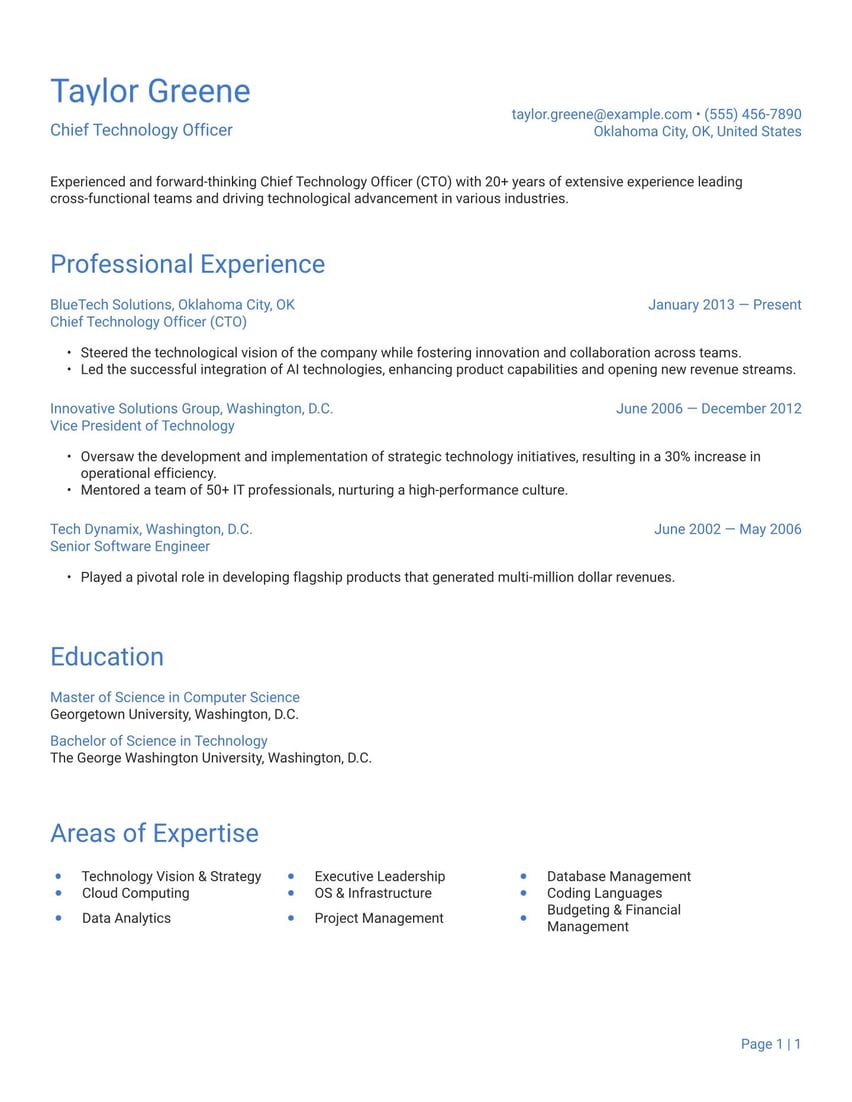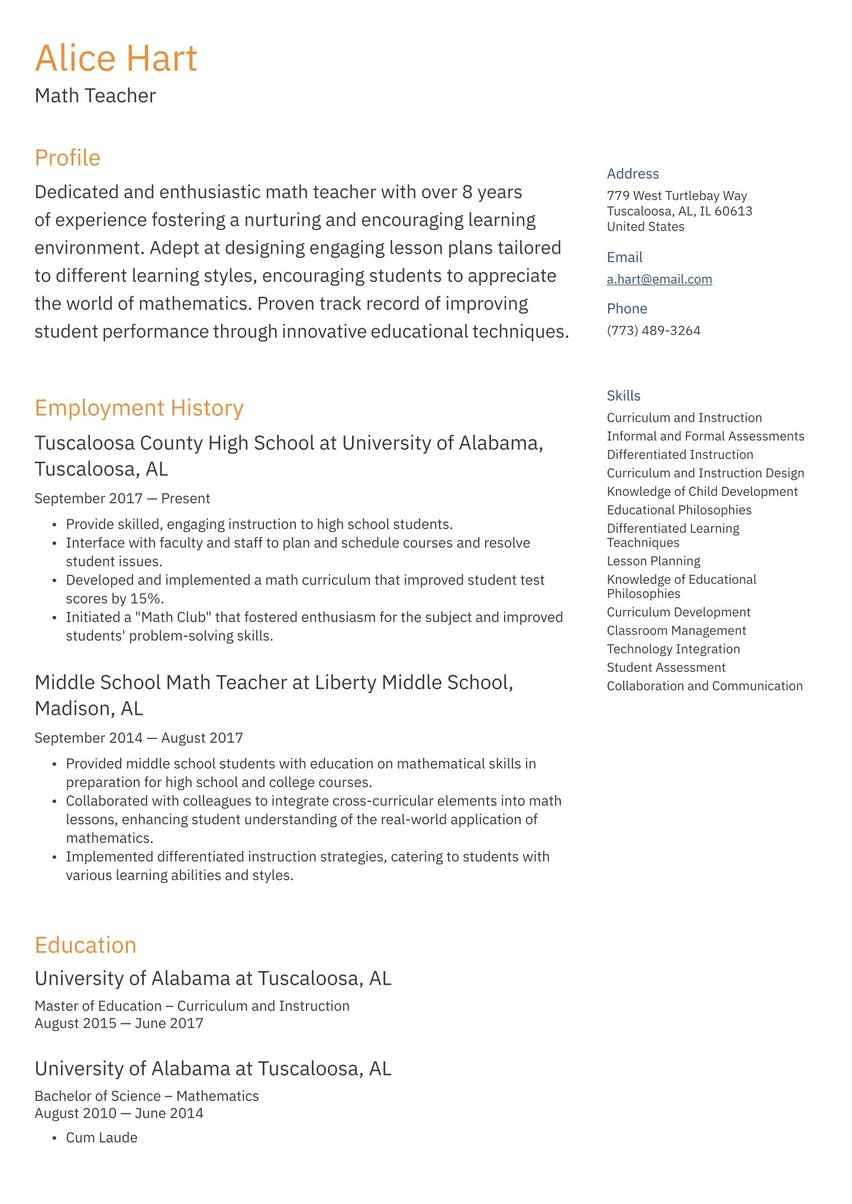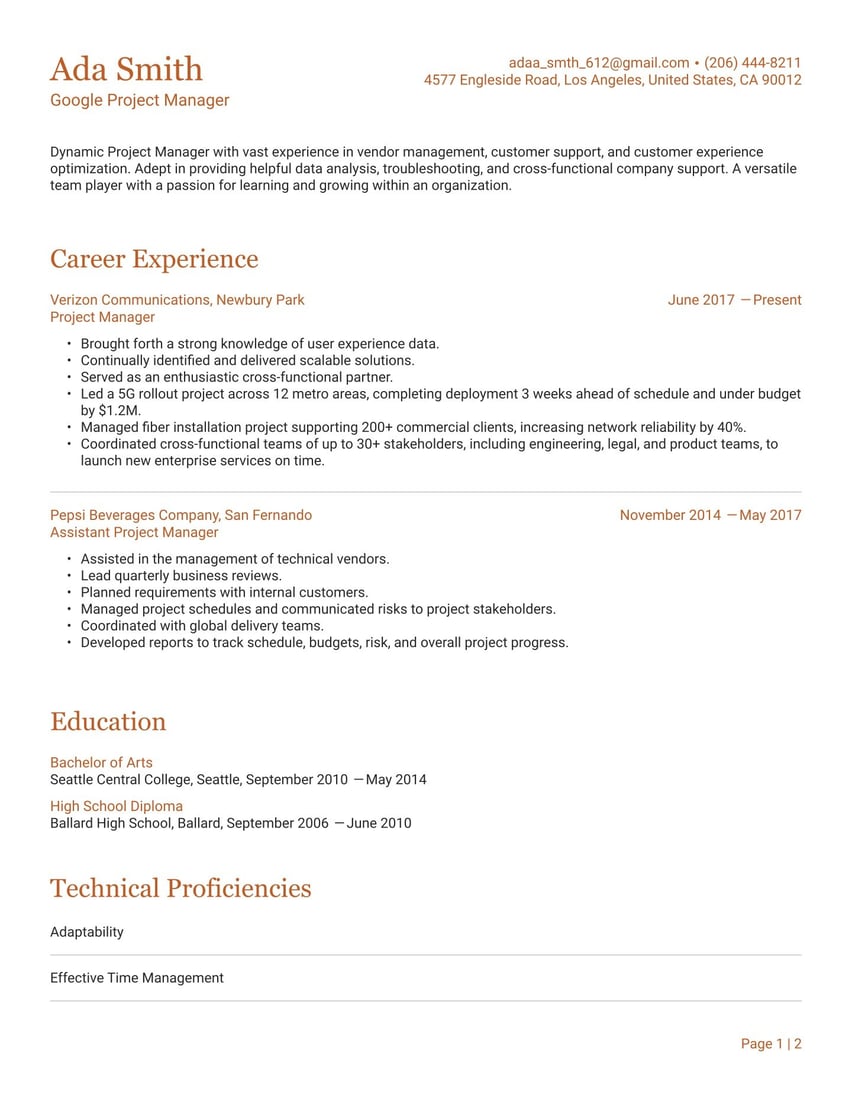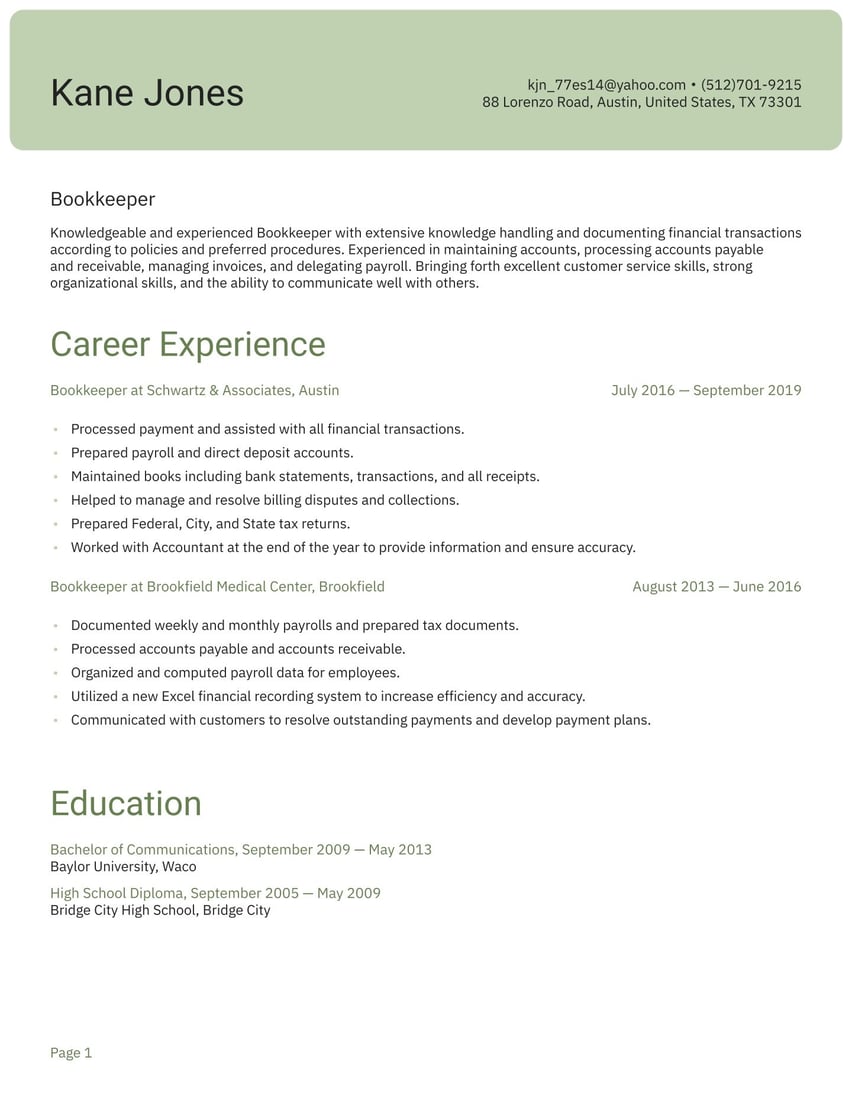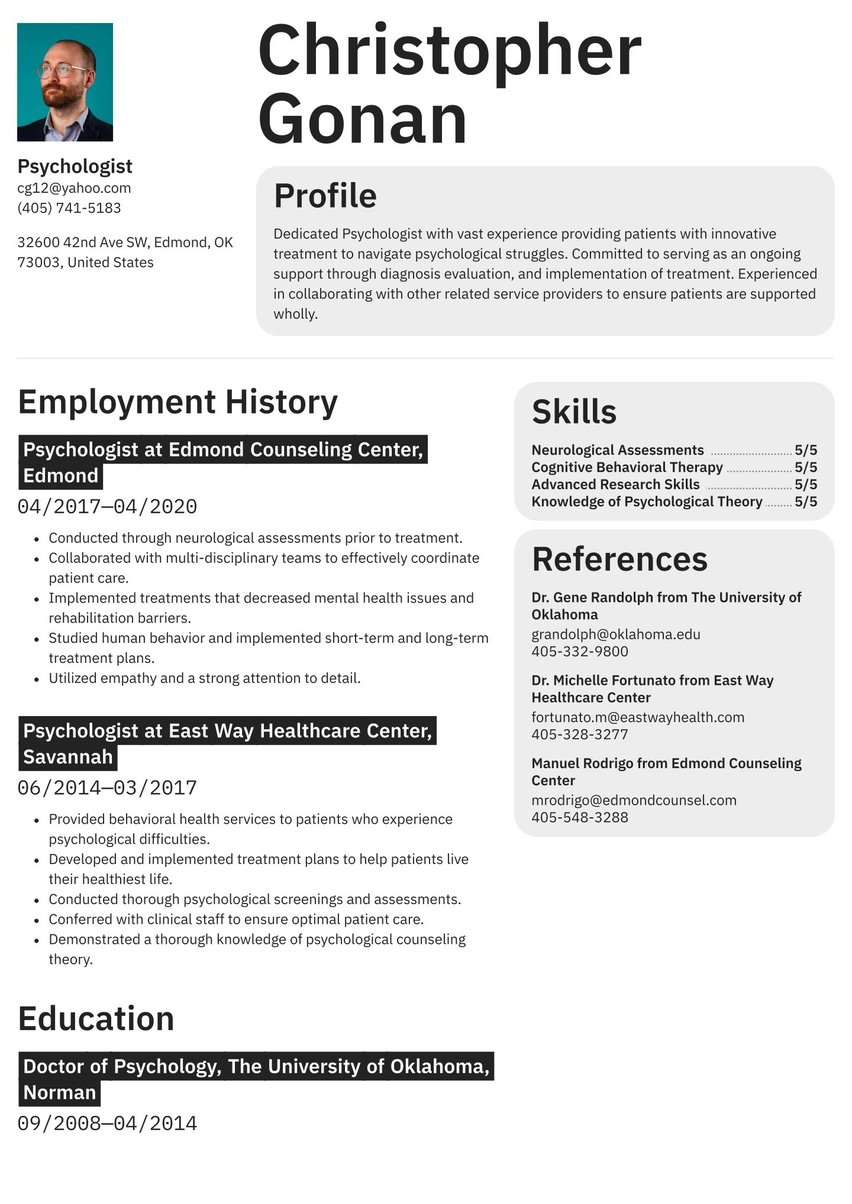04/2013 - 08/2019, Data Scientist, Open System Technologies, New York
- Analyzed data sets and helped companies make decisions based on findings.
- Served as a thoughtful advisor, working with Sales and Marketing professionals.
- Utilized algorithmic and programming tools to build helpful predictive models.
- Performed exploratory data analysis and discovered notable relationships.
- Tracked performance and identified business improvement trends.
11/2008 - 03/2013, Data Scientist, Maxwell Research Group, New York
- Worked to assess the company's needs and resolve issues with the use of data.
- Effectively mined unstructured data.
- Created and presented portfolios of growth, pointing out key trends.
- Identified new external data sources.
- Explained complex modeling in an understandable and relatable way.
- Worked to improve analytical tools and achieve greater results and awareness.
08/2003 - 05/2007, Bachelor of Communications, Manhattan College, Bronx
09/1999 - 05/2003, High School Diploma, Maria Regina High School, Hartsdale
- Data Verification and Maintenance
- Predictive Modeling
- Database Development
- Excellent Communication Skills
- Data Munging
- Strong Analytical Skills
- Leadership Skills
This is the era of the geek, so let your flag fly! If you love crunching numbers, count yourself lucky: The Harvard Business Review named data scientist as the sexiest job of the 21st century.
Data Scientist resume examples by experience level
In an explosive labor market where big dreams can come true, taking a deliberate, analytical approach to develop your data analyst resume is the best way to increase your odds or even get multiple job offers.
Just as accurate data drives insightful decisions, a well-crafted resume highlights your skills and experience, ensuring you stand out from the crowd. You need to be able to explain in your resume what value you will bring to a business with your analyses.
Resume guide for a data scientist resume
Fast track your job search with Resume.io. We have resume guides and examples for 500+ different professions. Create a compelling resume with ease using our resume builder.
This resume guide and corresponding data scientist resume example will cover the following:
- How to write a data scientist resume
- Picking the best resume format for data science
- How to include your contact information
- Crafting impressive summaries
- Adding your data science experience
- Listing education and relevant experience
- Selecting the right resume design/layout
- An overview of the data science market and salary trends
How to write an data scientist resume
What virtually all resumes have in common, no matter what the profession, is their barebones structure, as follows:
- The resume header
- The resume summary (aka profile or personal statement)
- The employment history section
- The resume skills section
- The education section
When crafting a resume for a data scientist role, think of yourself as a raw dataset that needs to be analyzed and synthesized for the employer to make a decision. Your resume should be clear, organized, and showcase the key metrics of your experience and skills.
To stand out in the competitive field of data science, focus on aligning your expertise with the company's data needs. Highlight your proficiency in statistical analysis, machine learning, and data visualization, and illustrate how your insights have driven impactful business decisions.
Here’s how to make your data scientist resume excel:
- Highlight what makes you different—whether it's a specialized skill, a unique project, or innovative problem-solving techniques.
- Use specific metrics and results to demonstrate how your data expertise has positively impacted past projects or organizations.
- Customize your resume to reflect the particular needs of the company and the specifics of the job description, showing how you fit seamlessly into their data team.
- Ensure your resume includes relevant keywords from the job posting to navigate through applicant tracking systems successfully. Start with a template designed for ATS compatibility.
Here are some facts to help you ATS-proof your resume:
- ATS software searches for exact keywords and phrases from job descriptions.
- Some systems weigh rare keywords more highly; for instance, unique skills are more sought-after.
- Not all ATS can read data in tables or headers and footers.
- Use acronyms and spell out entire titles just in case the ATS is programmed for one and not the other.
Choosing the right resume format for a data scientist
Unless your career path is taking a new turn or is geared to consulting roles as an independent contractor, the most commonly used chronological resume format should be suitable. If you’ve worked primarily as an employee, this is the simplest way to organize your achievements in bullet-point highlights below dated employer headings. It’s also what recruiters prefer.
Consider alternative resume formats if you want to emphasize specialized skills, clients or projects, rather than where you’ve worked. In that case, a functional or hybrid (combination) resume format might be more suitable.
Include your contact information
Just as a well-designed data model guides users through insights, your resume must clearly guide recruiters to the next step—contacting you. Ensure your resume is structured to make it easy for hiring managers to reach out for an interview.
Here’s what contact info to include on your data scientist resume:
- Name & title. Start with your full name and specify the role you’re targeting, such as "Data Scientist."
- Professional email. Use a straightforward format like firstname.lastname@example.com. Avoid using casual or unclear email addresses.
- Phone number. Provide a number where you can be easily reached, ensuring your voicemail is professional.
- Location. Include your city and state, and note if you’re open to relocation. Omit detailed addresses for privacy and safety.
- LinkedIn. Add your LinkedIn profile if it’s up-to-date and showcases your relevant experience and skills.
Avoid including:
- Date of birth. Unnecessary and can lead to age bias.
- Personal details. Skip marital status, social security number, or passport details.
- Photo. Refrain from adding a photo to prevent any potential bias related to your appearance.
Melissa Stevens
Data Scientist
New York, NY 10021 212-456-3288
mel_ssastvns77@yahoo.com
Melissa Stevens
Professional Hacker
iwillhackyou@email.com
212-456-3288
7 Washington Place
New York, NY 10021
Linkedin.com/in/hackermel
Create a strong resume summary
Your resume summary briefly tells recruiters who you are and what you find most important about your career thus far. In this short narrative—no more than three to five sentences—you have the opportunity to showcase your professional personality and attributes while highlighting one or two of your biggest successes.
Describe your workplace demeanor and explain why you are the best candidate for the job. If you are tempted to be modest, resist! You should be proud of your accomplishments but steer clear of overstating. If you are looking for your first full-time job, use any projects you have completed either at university or because as a data geek you do this stuff for fun.
Need some inspiration for your summary? We have several resumes relevant to the technology industry:
You can find example data scientist resume summaries below:
Enthusiastic data enthusiast with a recent degree in Computer Science and hands-on experience through internships and academic projects. Proficient in Python, R, and SQL, with a strong foundation in statistical analysis and machine learning algorithms. Adept at translating complex data into actionable insights and eager to apply analytical skills to solve real-world problems in a dynamic environment.
Data science specialist developing and implementing data models that drive business decisions. Skilled in advanced statistical methods, machine learning techniques, and data visualization tools. Proven track record of improving operational efficiency and customer insights through data-driven strategies. Known for a collaborative approach to cross-functional projects and a talent for translating data findings into strategic recommendations.
Seasoned Data Scientist with over a decade leading data-driven initiatives and developing innovative solutions to complex business challenges. Expertise in machine learning, big data technologies, and advanced analytics, with a history of driving significant improvements in business performance and strategic decision-making. Adept at managing teams, influencing executive leadership, and leveraging data to guide corporate strategy and growth. Committed to advancing organizational capabilities through cutting-edge data science practices.
Highlight your data science work experience: mind your own data
The employment history gives recruiters the roadmap of your career progress. Think of this section in the same way you think of putting together chunks of data to form a big picture. Each job or project is a stepping stone to the next.
The key idea here is to show recruiters what you have brought to each job, how you have grown, and what steps you are ready to take next. Many data scientists begin their careers as software developers, data engineers, business analysts or data analysts, so if you’re trying to make the leap to data scientist, be sure to show a clear pattern of growth in responsibility and knowledge.
When structuring your job entries, include your job title, the company name, location, and dates of employment. Then, add a scope paragraph to outline your day-to-day duties in the role. Here is where you’d give us a quick recap of what you were hired to do, any team members you supervised, budgets you managed, or special projects you led. This gives hiring managers context around the scope of your past roles and the level at which you were operating previously.
Use strong action verbs as you write. Here are some sample phrases to get you started:
- Devise and apply models
- Analyze and interpret data
- Determine optimal data sets and variables
- Gather large structured and unstructured data sets
- Create visualizations to communicate findings
- Discover solutions and opportunities
Focus on quantifiable accomplishments that highlight how your work has made a tangible impact on the business. Consider how you’ve improved efficiency, increased accuracy, or contributed to data-driven decision-making. For example:
- Developed predictive model that increased customer churn prediction accuracy by 25%, leading to a targeted retention strategy that reduced churn by 15% over 6 months.
- Optimized machine learning algorithms for real-time data processing, improving system efficiency by 40% and reducing processing time from 10 minutes to 6 minutes per dataset.
- Implemented data visualization tools that streamlined reporting processes, cutting down report generation time by 50% and enabling faster decision-making for cross-functional teams.
Data Scientist at Open System Technologies, New York
April 2013 - August 2019
- Analyzed data sets and helped companies make decisions based on findings.
- Served as a thoughtful advisor, working with Sales and Marketing professionals.
- Utilized algorithmic and programming tools to build helpful predictive models.
- Performed exploratory data analysis and discovered notable relationships.
- Tracked performance and identified business improvement trends.
Data Scientist at Maxwell Research Group, New York
November 2008 - March 2013
- Worked to assess the company's needs and resolve issues with the use of data.
- Effectively mined unstructured data.
- Created and presented portfolios of growth, pointing out key trends.
- Identified new external data sources.
- Explained complex modeling in an understandable and relatable way.
- Worked to improve analytical tools and achieve greater results and awareness.
How to write an data scientist resume with no experience
Writing a data scientist resume with no experience can be a challenge, but focusing on your strengths can help. Highlight your relevant skills, such as proficiency in programming languages (Python, R), data analysis, and statistical methods.
Include any coursework, personal projects, or internships that demonstrate your ability to work with data. Emphasize your enthusiasm for data science and your willingness to learn. Show how your transferable skills, academic achievements and any practical experience align with the job requirements.
Include the relevant key skills to qualify for data scientist roles
The skills section of your resume is an at-a-glance list of the talents you have that match the job you are seeking. It should include five to 10 of your top abilities.
Brainstorm a list of every program, statistical model, branch of math, etc. that you know. These are the hard skills you need to do your job.
Next, think about your people skills and other soft skills such as communication, organization, and time management required to be a productive worker.
From these lists, consider each job description and target those specific requirements when you customize the skills on your resume.
Here’s what the skills box looks like in our data scientist resume template.
- Data Verification and Maintenance
- Predictive Modeling
- Database Development
- Excellent Communication Skills
- Data Munging
- Strong Analytical Skills
- Leadership Skills
Detail your education & relevant certifications
If you have a minor in any of these subjects, you should also include that when you list your education. Many data scientists have master’s degrees, which focus their field of expertise, but a master’s degree is not a requirement to get hired as a data scientist, especially if you have a background in subjects such as:
- Mathematics
- Computer science
- Information technology
- Statistics and, of course,
- Data science
Be sure to also include any relevant certification programs or “bootcamps” related to data science computer science.
Below is the education section from our data scientist resume example.
Bachelor of Communications, Manhattan College, Bronx
August 2003 - May 2007
High School Diploma, Maria Regina High School, Hartsdale
September 1999 - May 2003
Pick the right resume layout and design for your data scientist resume
As a data scientist, you know that the message is more important than an ornate design. Use this philosophy to develop the look of your resume. This is a visual representation of your professional personality, so be sure to reflect that.
The main idea is to keep your resume document legible. Recruiters will spend only seconds scanning for information and getting an impression of who you are. If your resume features big blocks of type or a confusing layout, it is likely to end up in the garbage.
Here are a few rules of thumb:
- Use bulleted lists instead of paragraphs.
- Limit the amount and brightness of color.
- Make sure your contact information, skills, and job titles are easy to find.
- Avoid placing important information in headers and footers that the ATS likely can’t read.
Check for typos, save your resume as a PDF file, and scan for formatting errors. Even tech-savvy professionals can slip up. Don’t be one of them!
Start with one of the field-tested resume templates from Resume.io's four style categories: Simple, Creative, Modern, or Professional.
Data scientist text-only resume example
Profile
Accomplished Data Scientist with a passion for delivering valuable data through analytical functions and data retrieval methods. Committed to helping companies advance by helping them to develop strategic plans based on predictive modeling and findings. Bringing forth a proven track record of analyzing complex data sets and serving as a strong advisor.
Employment history
Data Scientist at Open System Technologies, New York
April 2013 - August 2019
- Analyzed data sets and helped companies make decisions based on findings.
- Served as a thoughtful advisor, working with Sales and Marketing professionals.
- Utilized algorithmic and programming tools to build helpful predictive models.
- Performed exploratory data analysis and discovered notable relationships.
- Tracked performance and identified business improvement trends.
Data Scientist at Maxwell Research Group, New York
November 2008 - March 2013
- Worked to assess the company's needs and resolve issues with the use of data.
- Effectively mined unstructured data.
- Created and presented portfolios of growth, pointing out key trends.
- Identified new external data sources.
- Explained complex modeling in an understandable and relatable way.
- Worked to improve analytical tools and achieve greater results and awareness.
Skills
- Data Verification and Maintenance
- Predictive Modeling
- Database Development
- Excellent Communication Skills
- Data Munging
- Strong Analytical Skills
- Leadership Skills
Education
Bachelor of Communications, Manhattan College, Bronx
August 2003 - May 2007
High School Diploma, Maria Regina High School, Hartsdale
September 1999 - May 2003
Data scientist job market and outlook
In our technology-driven world, companies are gathering large caches of information about human behavior, demographics, and any other category that can be quantified. That information is useless on its own.
That’s where you come in.
Many industries capitalize on big data. Which ones are making the most of it right now? Here are the top verticals where Data Science Central believes data scientists can use their skills best and earn the highest salaries:
- Finance
- Healthcare
- Travel
- Energy
- Manufacturing
- Gaming
- Pharmaceuticals
Each of these industries uses big data to inform decision-making and solve problems, but each has different needs and goals. With that variety, it will be in your best interest to focus your resume as specifically as you can to each of your areas of interest.
Here are some stats around the big data industry according to Big Data Analytics News
- The global Big Data market is expected to grow by 9% in 2024.
- The Big Data market volume is expected to reach $84 billion in 2024.
- Around 2.5 quintillion bytes worth of data are generated each day
- The big data analytics market is predicted to reach $349.56 billion in 2024.
- The volume of data created worldwide as of 2023 is 120 zettabytes and is expected to reach 181 zettabytes by the end of 2025.
What type of salary you can expect in data science
The average annual base salary for data scientists is $ $97,483, according to Payscale. The top 10% of earners make $136,000 and the bottom 10% earn $69,000.
Key takeaways for building a data scientist resume
Your data scientist resume should clearly showcase your analytical skills and key achievements, just like a well-organized data model. Focus on quantifiable impacts, such as improving algorithms or uncovering insights, and tailor your resume to each job description. Highlight unique strengths and customize your resume to match the company’s data needs, using relevant keywords.
Simplify your resume writing process with our online resume builder.


.jpg)

.jpg)



